






Managing
Sarath
Emma
Sabrina
Naomi
Andrew
Art & Design
Branding & Marketing Partnership
Charlie
Louis
Shirley
Jennifer
Monica
Rachel
Free Subscription www.cxomagazine.com
International Partnerships admin@cxoomagazine.com Americas
Follow Us On www.linkedin.com/company/cxomagazinepage www.facebook.com/CXOMagazinePage January


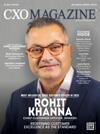
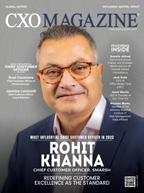

Have you ever found yourself waiting on a customer service call, tapping your fingers in frustration as the minutes tick by? Or perhaps you’ve had one of those “wow” moments where a company really got you—your needs, your preferences, your expectations—and left you with a sense of loyalty? That’s the magic of customer-centric leadership. It's not just about products or services; it's about creating genuine, meaningful relationships.
As we step into 2025, customer experience is no longer just a department. It’s a mindset, a strategy that shapes everything a business does. And at the heart of this shift? The Chief Customer Officer (CCO). Today’s CCO is no longer just a title; it’s a leadership role driving change across every part of the organization.
In this issue of CXO Magazine, we spotlight the “Most Influential Chief Customer Officers of 2025,” including an in-depth look at Rohit Khanna, the Chief Customer Officer at Smarsh. With over two decades of experience in technology security and cloud software, Rohit embodies the kind of leadership required to thrive in today’s customer-first world.
Why is the CCO’s role so crucial today? Well, in 2025, customer experience is no longer something that’s “owned” by a single team. It’s a philosophy that must be embraced across the entire organization. CCOs like Rohit Khanna don’t just manage customer service—they collaborate across functions, aligning the company’s values with every customer touchpoint. Their job is simple but profound: to ensure customers are at the heart of everything the company does.
But here’s where things get interesting. The CCO today isn’t just a strategist—they’re also the bridge between technology and humanity. Yes, digital tools and automation are transforming customer engagement, but no amount of AI can replace the power of a personal connection. Leading CCOs understand this balance, using technology to enhance the experience, not to replace the human touch.
So, as we dive into this issue, think about your own experience. How can your company take customer-centric leadership to the next level? And what role can you play in making that happen? We hope this issue sparks ideas, conversation, and most importantly—action.
Enjoy Reading.

Sarath Shyam
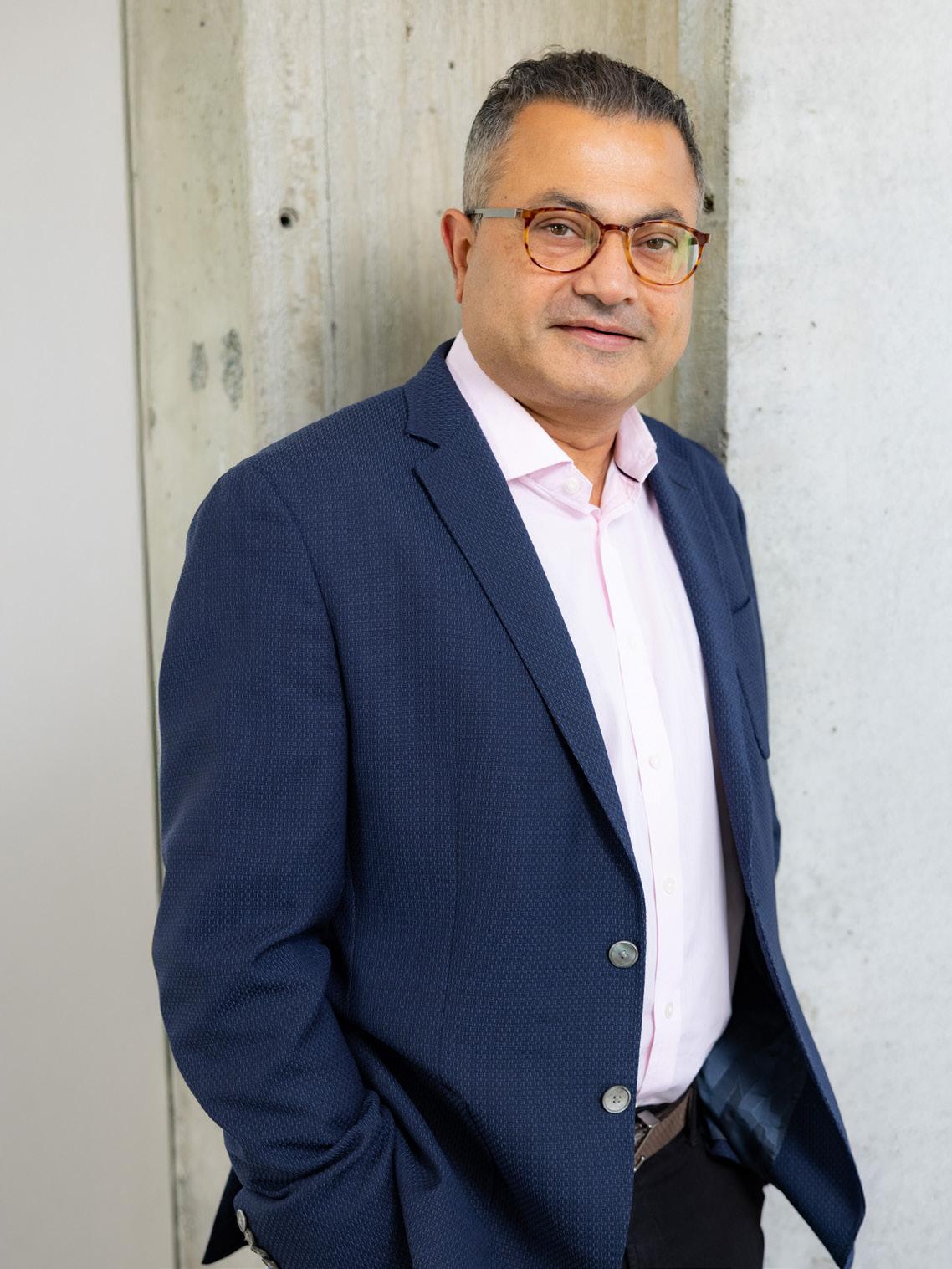
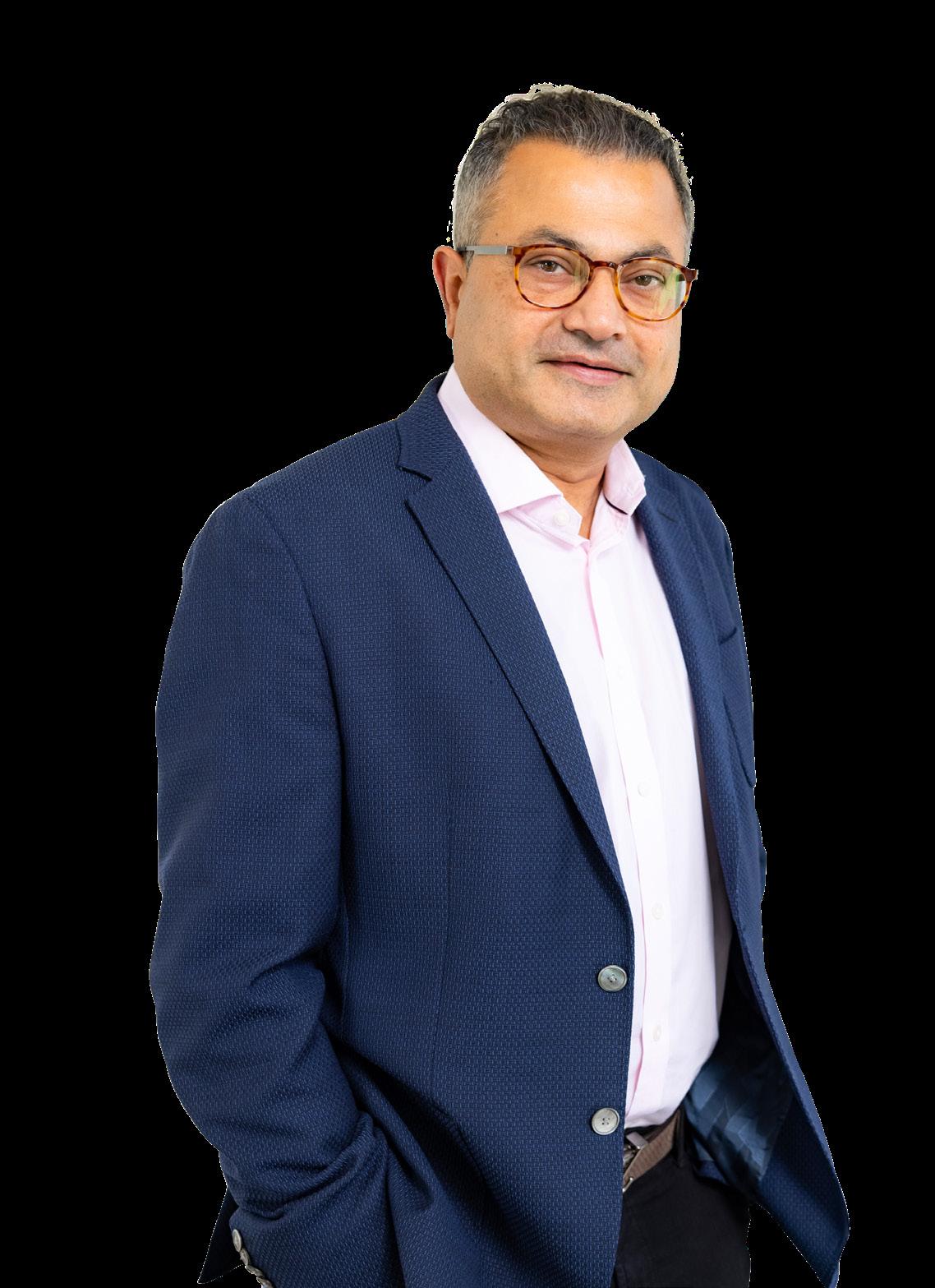

28
Brad Casemore, Chief Customer Officer of PartsSource Inc.
Redefining Customer Success

CHIEF CUSTOMER OFFICER

44
Jasmine Lombardi, Chief Customer Officer, Locus Robotics
Transforming Customer Success Through Strategic Innovation and Human-Centered Technology
22
Norman Marks, Member of the Advisory Board at Institute of Risk Management India Affiliate
Navigating Organizational Integrity: The Crucial Role of Internal Audit



58
Genelle Aldred, Communications Trainer and Strategic Media Advisor at Genelle Aldred Consultancy
AI and the Art of
Leadership Communication: Leveraging Technology for Impact
38
Janet Martin, CEO & Founder of Our Time HQ
The Power of Diversity in Shaping the Future of AI: Why Frontline Workers’ Perspectives Matter

64
Jack Kelly, CEO of Office Ready Tech (ORT)
How Tech Can Turbo-Charge Your CX: People, Planet, Purpose

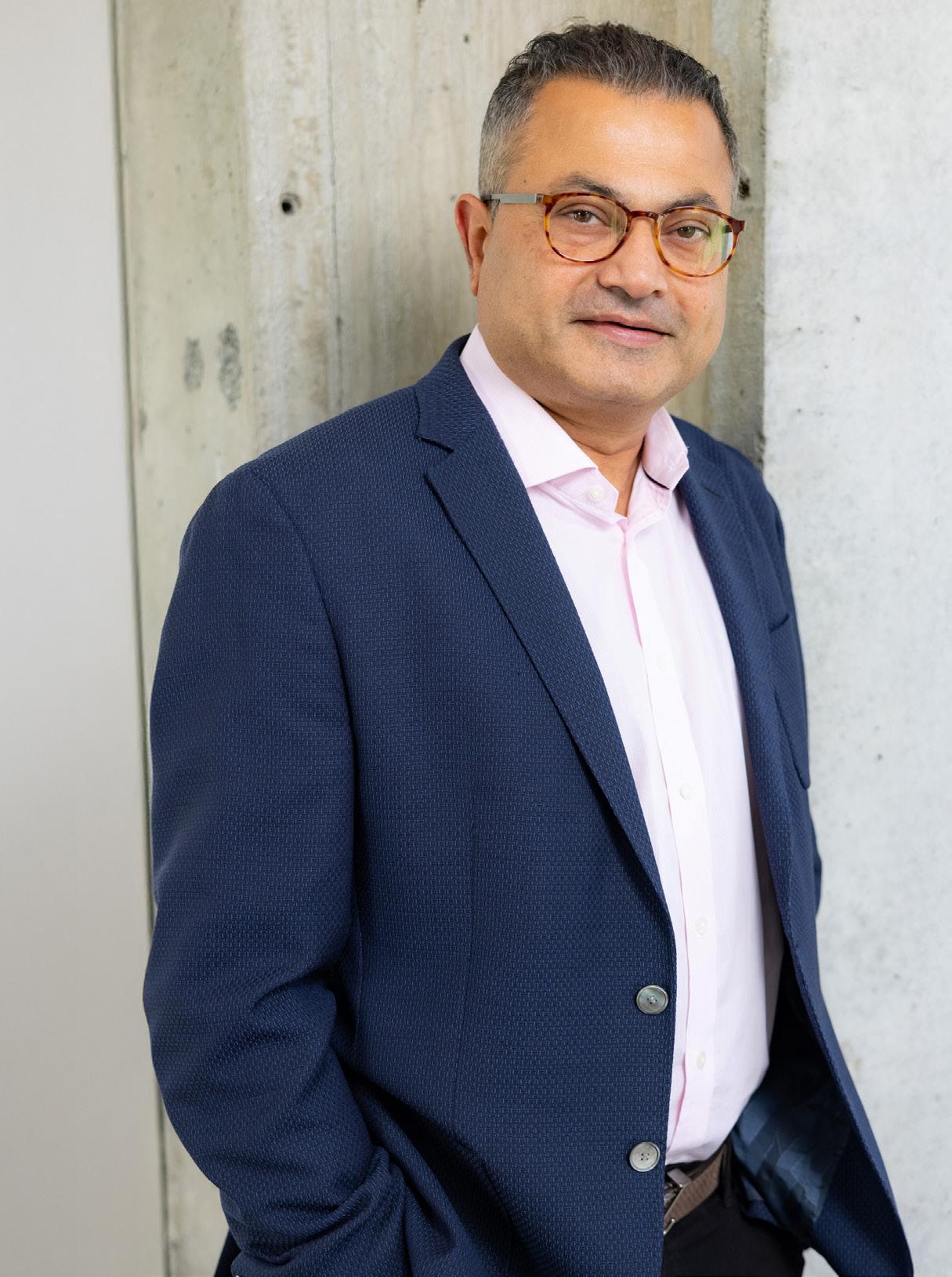
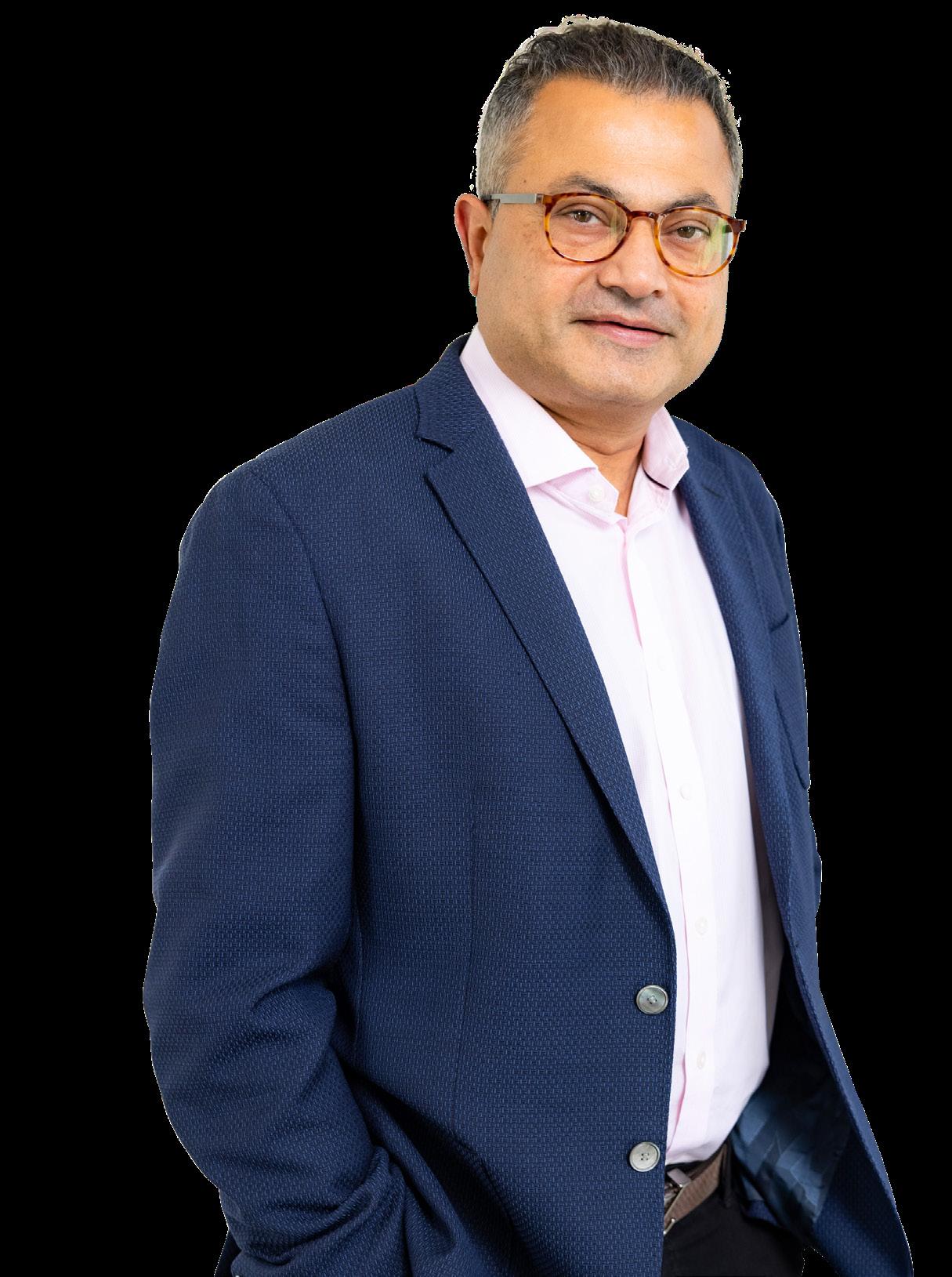


Rohit Khanna, Chief Customer Officer at Smarsh, is a leader deeply committed to elevating customer satisfaction and ensuring businesses achieve their best outcomes. With a career spanning over two decades in technology security and cloud software, Rohit has built an impressive track record of leading global customer success initiatives for organizations ranging from startups to Fortune 500 companies.
Before joining Smarsh, Khanna held leadership roles at SecureAuth, a multi-factor authentication software company, where he
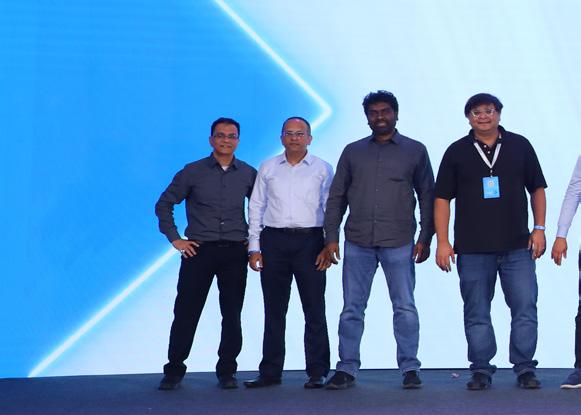
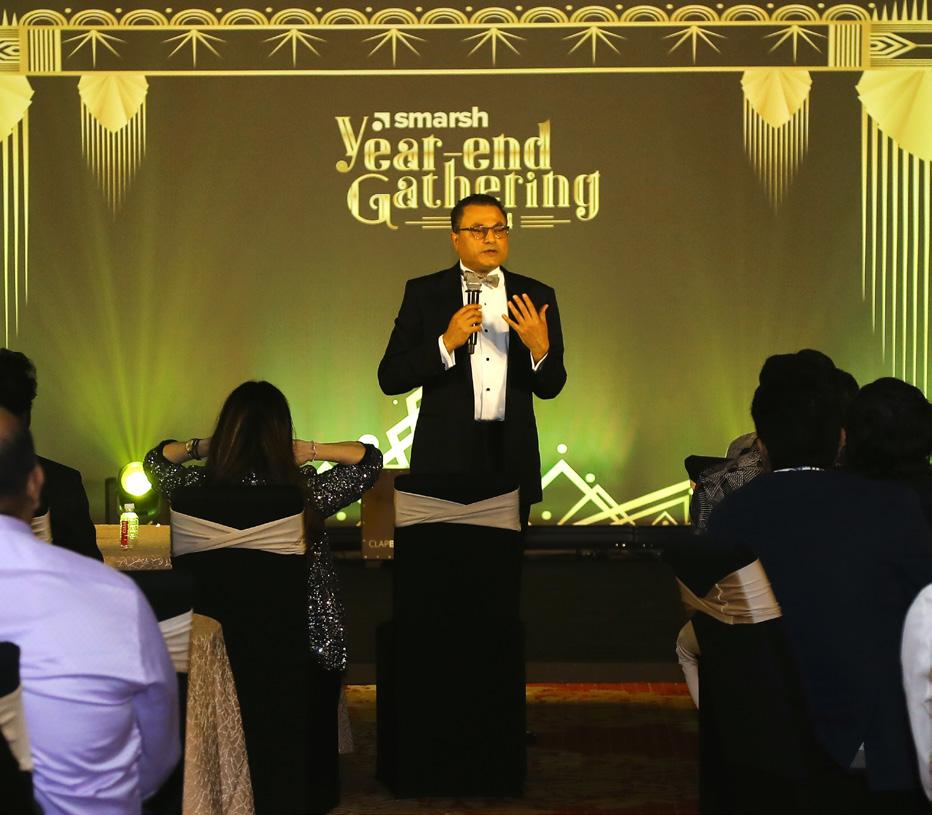
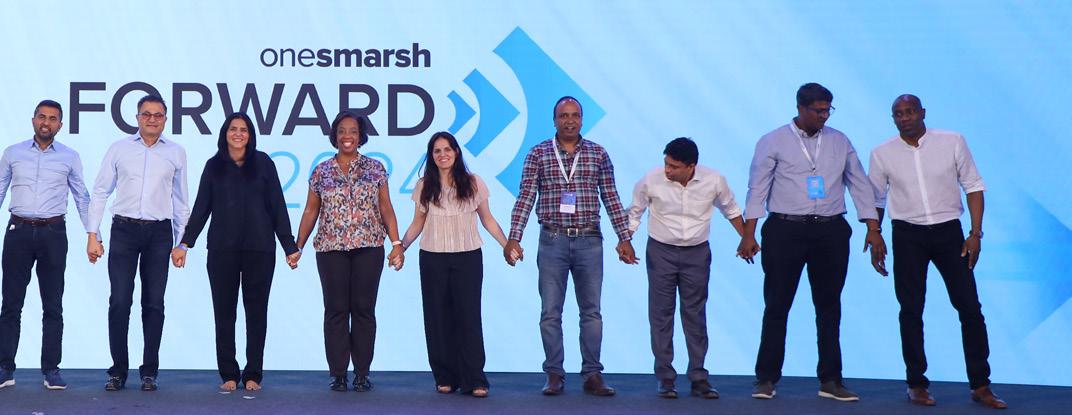
Smarsh University, a training platform introduced under Rohit’s guidance, empowers both employees and customers to fully leverage the Smarsh platform
was responsible for managing customer success and experience. His extensive background includes steering professional services, customer support, technical architecture, customer success, and training groups for enterprise-focused cybersecurity, big data, and AI-driven cloud software companies. Along the way, he has played pivotal roles in 15 mergers and acquisitions, contributed to two IPOs, and scaled services revenue from $1 million to over $135 million—all while leading teams of varying sizes, from two members to over 600.
This blend of technical expertise, strategic vision, and a relentless focus on customer outcomes has shaped Khanna’s approach to leadership. “I’ve always believed that aligning technical solutions with customer outcomes is at the heart of true success,” he says. It’s a philosophy that continues to guide his work at Smarsh, where he leads a global team of more than 300 professionals across seven locations, all united by a shared mission: delivering exceptional customer experiences.
Under Khanna’s leadership, Smarsh has developed and scaled six key divisions designed to meet the diverse needs of its customers: solutions delivery, global support, data engineering, data
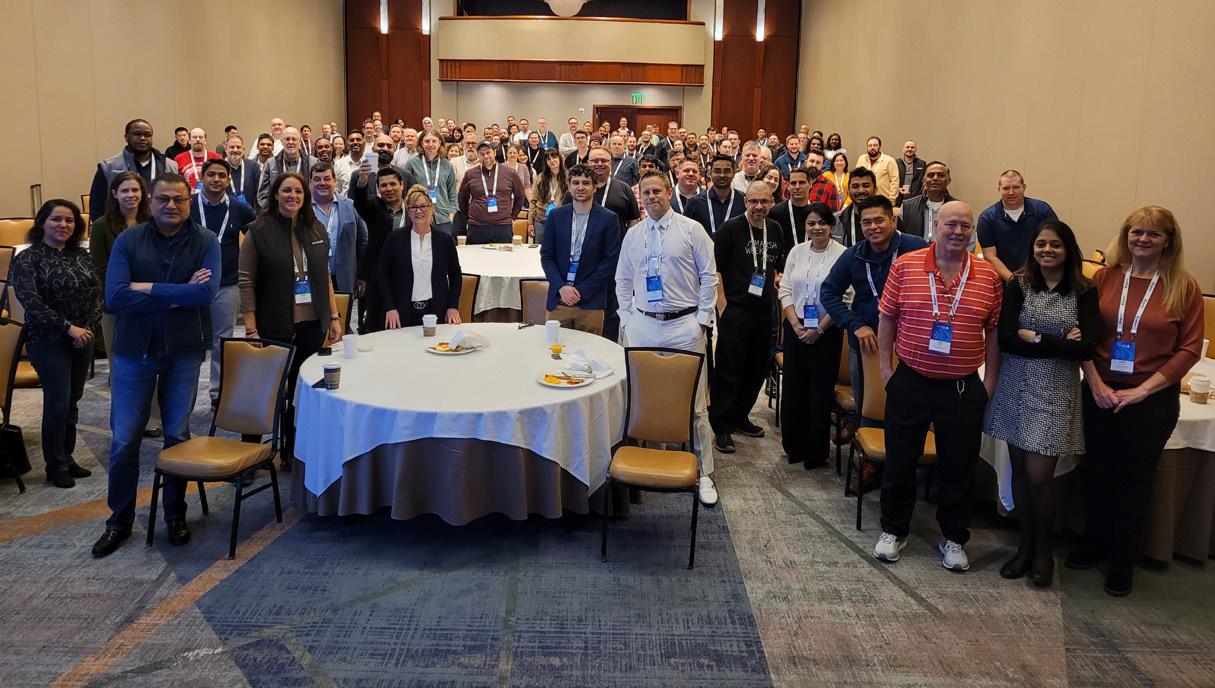
management, Smarsh University, and managed services. Each division plays a critical role in ensuring customers receive the highest level of service and support.
The solutions delivery team focuses on seamless implementation and onboarding, while the global support division offers 24/7 assistance tailored to unique customer needs. The data engineering team helps businesses unlock the full potential of their data, while the data management division, staffed with worldclass data migration experts, ensures efficient and precise data transfers. Smarsh University, a training platform introduced under Rohit’s guidance, empowers both employees and customers to fully leverage the Smarsh platform.
The managed services team ties it all together, offering proactive, outcome-driven support that complements and streamlines customer effort. “Our goal is to ensure our customers achieve their outcomes with ease,” Khanna explains. “When we succeed in doing that, we’re not just providing a service—we’re creating lasting partnerships.”
Smarsh, founded in 2001 by Stephen Marsh, emerged from a visionary understanding of the financial services industry’s shifting needs. Steve, a seasoned professional, saw the pressing challenge of managing the regulatory
requirements tied to the ever-growing realm of electronic communications. From this insight, Smarsh was born—a company designed to help businesses search, retain, and monitor digital communications to stay compliant with complex regulatory frameworks.
Today, Smarsh serves as a trusted partner to organizations worldwide, including 18 of the top 20 global banks, enabling businesses to capture, archive, and monitor communications data to manage risk effectively. The Smarsh Enterprise Platform, equipped with AI-driven solutions like Capture, Archive, Conduct, and Discovery, empowers businesses to uncover valuable insights within their digital communications. From leading financial institutions in North America, Europe, and Asia to U.S. government agencies, Smarsh has become synonymous with innovative compliance solutions.
At Smarsh, Khanna has been instrumental in driving the company's customer-first vision.
Under his leadership, Smarsh Central—a dedicated customer help center—was established to deliver personalized and selfservice experiences 24/7. Smarsh Central is more than just a help desk; it’s a reflection of the company’s commitment to listening to its clients and proactively addressing their needs.
“Our investment in Smarsh Central ensures we remain at the forefront of customer experience as the industry evolves,” says Khanna.
Over the past year, Khanna’s team has focused on elevating Smarsh Central through strategic digital enhancements. The implementation of Knowledge-Centered Service (KCS) methodology has streamlined the documentation and sharing of known issues, enriching the platform’s knowledge base. The team also prioritized refining the search and navigation experience, tailoring it to specific customer needs with targeted knowledge, training resources, and documentation. A well-
Today, Smarsh serves as a trusted partner to organizations worldwide, including 18 of the top 20 global banks, enabling businesses to capture, archive, and monitor communications data to manage risk effectively
executed marketing strategy further boosted adoption rates, leading to significant growth in engagement. Smarsh Central’s registered user base has increased by 40%, while new and returning visitors surged by 4.7% and 26%, respectively.
This transformation is reflected in the company’s ability to scale efficiently. “While support staff grew just 3.5 times, our revenue increased sixfold, and the number of products supported doubled,” Khanna notes with pride. These achievements underscore Smarsh’s ability to innovate without compromising the quality of service.
Smarsh’s commitment to innovation doesn’t stop at customer support—it extends to its product offerings, designed to cater to a diverse
client base that ranges from small businesses to Fortune 500 enterprises. The company’s success lies in its ability to balance flexibility with functionality, providing enterprise-grade customizations for large organizations while ensuring simplicity and speed for SMBs.
Meeting the needs of global enterprises comes with its unique challenges. From navigating intricate regulatory frameworks like GDPR and CCPA to addressing data sovereignty laws, Smarsh excels at delivering compliance solutions tailored to specific jurisdictions. “Enterprises often face intense scrutiny around data residency and model risk management,” explains Khanna. “Our role is to provide clear strategies for data localization and work closely with regulators to ensure compliance.”
For smaller businesses, Smarsh emphasizes efficiency and education. SMBs may lack the resources or awareness to prioritize compliance
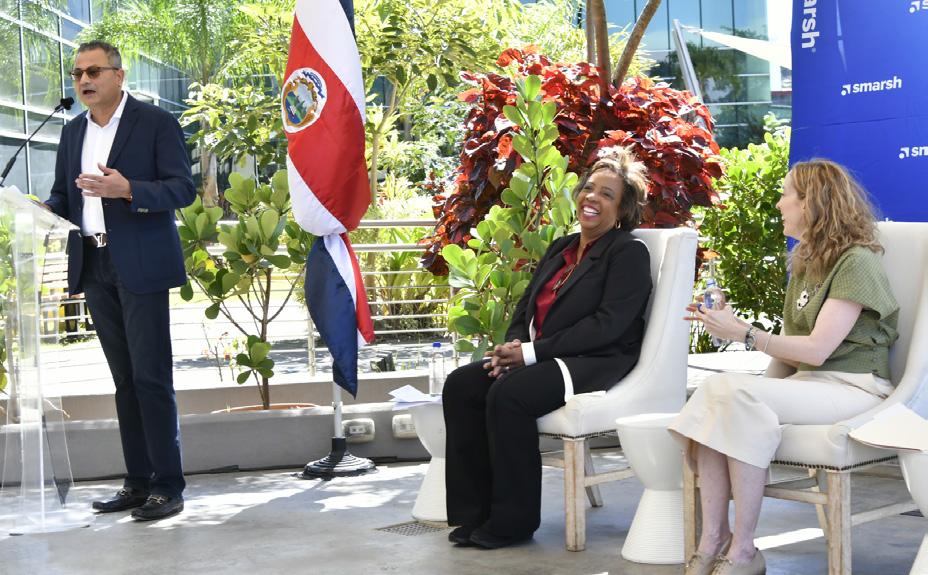

until it becomes a pressing issue. Smarsh’s approach is twofold: streamlining implementation to deliver immediate value and fostering awareness about the risks of non-compliance. By offering cost-effective, scalable solutions, Smarsh helps small businesses meet industry standards while preparing them for future growth.
Smarsh’s ability to bridge the gap between human expertise and advanced technology lies at the heart of its success. Whether through leveraging AI to refine compliance tools or evolving Smarsh Central to better serve customers, the company continuously pushes the boundaries of innovation. “At Smarsh, we believe in blending cutting-edge technology with a human touch to ensure our clients’ success,” Khanna shares. From multinational corporations to local businesses, Smarsh’s tailored strategies, robust support, and forward-thinking solutions make it a leader in the ever-evolving field of compliance technology.
At the heart of Smarsh’s approach to customer success lies a commitment to adapting to customer feedback and evolving industry demands. Under Khanna’s leadership, the solutions delivery team was designed to address diverse client needs by offering professional services and project management that ensure seamless implementation and onboarding. This division was built with a vision to guarantee a smooth start for every new client while fostering long-term relationships.
Khanna emphasized the importance of laying a strong foundation for customer success, explaining, “From the very beginning of their journey with Smarsh, our goal is to create a cycle of consistent support. It’s not just about solving immediate challenges but building trust for the
Through regular surveys, one-on-one meetings, and team discussions, Khanna fosters an environment where employees feel heard and valued
future.” This philosophy, coupled with a hands-on approach and skilled mentorship, has positioned Smarsh as a reliable partner for organizations navigating complex compliance and operational challenges.
By delivering tailored, high-value solutions, Smarsh achieved an extraordinary 800fold increase in services revenue while maintaining above-industry profit margins. This growth reflects the company’s ability to combine operational efficiency with strategic innovation, cementing its reputation as a leader in customer success.
To meet the needs of a growing client base, Khanna’s team implemented a balanced workforce model featuring Centers of Excellence (COEs) in multiple global locations, including Belfast, Costa Rica, India, Israel and Philippines. This 50/50 onshore-offshore strategy not only optimized costs but also ensured round-theclock service delivery across time zones. These COEs have become the backbone of Smarsh’s global operations, supporting scalability while maintaining high-quality service.
Additionally, Smarsh Central, the company’s customer experience platform, has undergone significant enhancements to meet evolving client expectations. AI and machine learningbased search capabilities now provide real-time access to a wealth of information, including training resources, product documentation, and knowledge articles. These updates have drastically improved the customer experience, delivering targeted, up-to-date content at the click of a button.
Smarsh’s commitment to technological innovation is evident in its integration of AI tools to optimize customer support processes. By streamlining operations and reducing
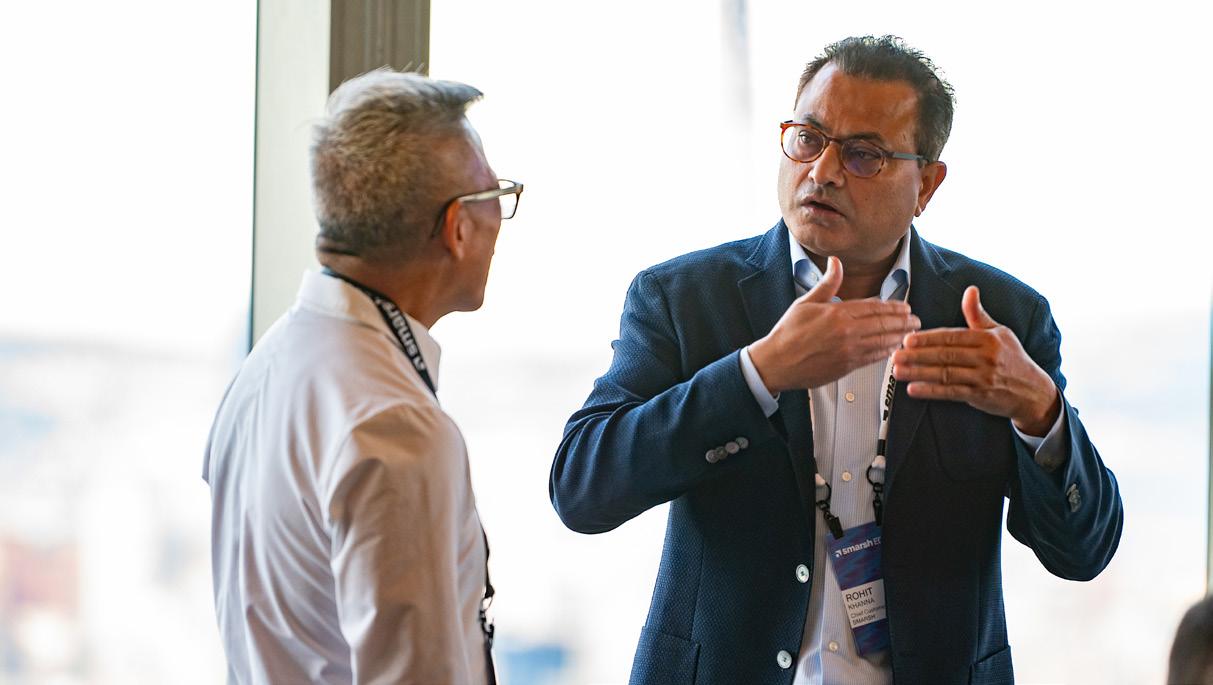
response times from over five minutes to a remarkable 0.84 minutes, Smarsh has set a new standard for efficiency in the industry. Khanna highlighted the risks companies face when they delay adopting transformative technologies, noting, “Businesses can’t afford to fall behind. By leveraging AI, we’ve not only improved issue resolution times but have also delivered a seamless experience that customers now expect as the norm.”
Being a successful customer experience leader is about more than numbers; it’s about creating meaningful impact—on customers, teams, and the industry. Khanna believes in a holistic
approach that combines a clear strategic vision with actionable, measurable steps.
Providing clarity to his team has been central to his leadership, emphasizing a shared mission to empower customers and help them achieve compliance and operational goals. A unified vision ensures that every team member understands their role in cultivating a customercentric culture. At Smarsh, this commitment is reflected at every stage of the customer journey, translating into tangible outcomes that benefit both clients and the company.
Khanna also ensures his teams are wellequipped through Smarsh University, a platform offering robust product training and compliance frameworks. The use of advanced
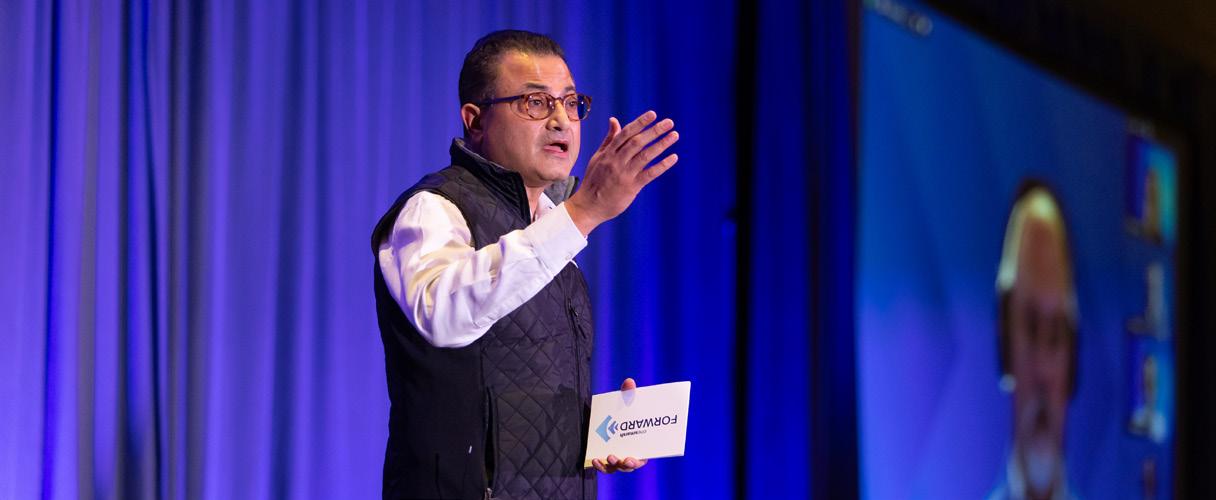
tools like real-time analytics and success planning software further enables employees to address customer challenges with confidence. Recognizing and celebrating achievements is another cornerstone of his leadership approach. Whether through public shoutouts, awards, or sharing positive customer feedback, Khanna believes in highlighting accomplishments to keep morale high and reinforce the value of consistent delivery.
Listening to team feedback is as important as listening to customers. Through regular surveys, one-on-one meetings, and team discussions, Khanna fosters an environment where employees feel heard and valued. He noted, “When people see their feedback lead to action, it boosts morale and engagement in ways that are deeply impactful.”
Ultimately, Khanna’s leadership is guided by a clear purpose. He reminds his team that their work isn’t just about solving technical issues; it’s about enabling businesses to thrive in highly regulated environments by meeting their compliance obligations and protecting their data. By fostering clarity, empowerment, recognition, and development, Smarsh has created a culture where every team member
is inspired to go above and beyond for customers, driving exceptional results and reinforcing the company’s position as a leader in customer success.
Under the leadership of Khanna, Smarsh has transformed its approach to customer success by focusing on metrics that matter most to its clients. One standout measure is the company’s Net Promoter Score (NPS), which reflects the trust and satisfaction customers feel. When Khanna joined Smarsh, the NPS stood in the low 20s—a figure that signaled room for improvement. Today, that number has climbed to an impressive 62.8, a 40-point leap that speaks volumes about the trust Smarsh has cultivated.
Khanna views this achievement as a testament to the company’s commitment to excellence. He remarked, “The NPS is more than a number. It’s a direct reflection of the trust our customers have in us, and it shows we’re doing the right things to meet their needs.”
Response time has also been a focal point in Smarsh’s journey toward customer success. In the past five years, the company has dramatically
In the past five years, Smarsh has dramatically reduced its average customer response time from over five minutes to just 0.84 minutes
reduced its average customer response time from over five minutes to just 0.84 minutes. This improvement has ensured faster issue resolution and created a more seamless experience for customers navigating Smarsh’s platforms.
Another transformative achievement has been in onboarding efficiency. Recognizing the link between onboarding time and customer satisfaction, Smarsh has reduced its average onboarding time by an impressive 75%. This means clients can now start benefiting from their partnership with Smarsh much sooner, avoiding unnecessary delays and complexities. The Customer Success team prioritized creating a frictionless onboarding process that not only instills confidence in new customers but also sets the stage for long-term success.
The focus on customer satisfaction is equally evident in Smarsh’s remarkable 96.5% satisfaction score. This milestone reflects a carefully designed customer experience that prioritizes support, responsiveness, and a relentless focus on exceeding expectations. According to Khanna, “When customers feel valued and supported, it’s not just about solving their immediate challenges—it’s about building a lasting relationship that keeps delivering value.”
As Smarsh’s customer base continues to expand, the company remains committed to adapting to evolving needs with a forward-thinking, customer-centric mindset. This adaptability involves reshaping teams, redefining goals, and building innovative solutions that align with customer demands.
By leveraging advancements in AI, Smarsh aims to enhance its customer service platforms in ways that align with its core mission and values
One such initiative is the Smarsh Annual Service Plan (ASP), tailored for large and global financial firms seeking greater control, faster time-to-value, and lower costs. ASP provides ondemand expertise to help organizations navigate and manage the complexities of their Enterprise Platform. Recognizing the growing demand for this solution, Smarsh plans to expand its ASP client base and offer even more businesses an efficient and cost-effective path to success. Technology will also play a central role in Smarsh’s growth strategy. By leveraging advancements in AI, the company aims to enhance its customer service platforms in ways that align with its core mission and values. This includes introducing AI-driven capabilities to streamline operations, improve customer
interactions, and deliver even greater value to its clients.
Khanna emphasized that the company’s focus on listening to customer feedback and analyzing market trends will remain unchanged. “We’re always looking for ways to evolve alongside our customers. By staying attuned to their needs and embracing emerging technologies, we ensure that we not only meet but exceed their expectations,” he shared.
With its eyes set on the future, Smarsh is poised to build on its legacy of customer success while driving innovation. The company’s commitment to delivering value, fostering trust, and staying agile in an ever-changing landscape ensures it remains a trusted partner for its clients, now and in the years to come.

Norman Marks, CPA, CRMA is a retired senior executive. He works with individuals and organizations around the world, advising them on risk management, internal audit, corporate governance, enterprise performance, and the value of information. Norman was the chief audit executive of major global corporations for twenty years and is a globally recognized thought leader in the professions of internal auditing and risk management. In addition, he served as chief risk officer, compliance officer, and ethics officer, and led what would now be called the IT governance function (information security, contingency planning, methodologies, standards, and more). He managed the Sarbanes-Oxley Section 404 (SOX) programs and fraud investigation units at several companies. Norman is a retired member of the review boards of several audit and risk management publications (including the magazines of ISACA and the IIA), a frequent speaker internationally, the author of multiple awardwinning articles (receiving the IIA’s Thurston award in 2004 and 2014), and a prolific blogger.
In a recent interview with CXO Magazine, Norman Marks discussed his experience with risk management and internal audit. He shared his views on the efficiency and effectiveness of internal audit processes, modern business environments, and many more.

Norman Marks
Member of the Advisory Board at Institute of Risk Management India Affiliate
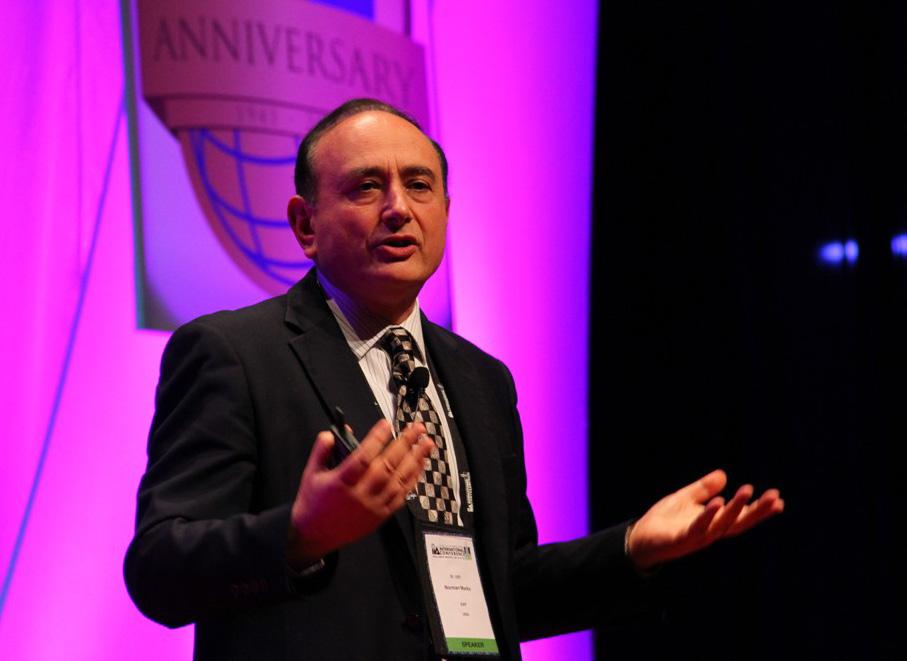
What role does internal audit play in ensuring organizational integrity and compliance?
This is an interesting question. Management, with oversight from the board, is responsible for “organizational integrity and compliance”. They put processes, systems, and internal controls in place that should provide reasonable assurance that operational integrity and compliance are achieved.
Internal audit has a valuable role. Those processes, systems, and internal controls may not function as well as management believes. There are many reasons that may happen, including inexperienced people or system changes that don’t perform as desired.
What internal audit does is provide assurance that the systems of internal control and risk management are functioning as they should. They also provide their professional insight and advice on how those systems can be upgraded if needed.
How to approach developing an internal audit plan tailored to an organization's specific risks and objectives?
If internal audit is going to optimize the value it provides to the organization’s leadership in management and on the board, it should focus its work on the issues that will matter most to those customers: the more significant sources of risk to the achievement of enterprise objectives.
If internal audit is going to optimize the value it provides to the organization’s leadership in management and on the board, it should focus its work on the issues that will matter most to those customers: the more significant sources of risk to the achievement of enterprise objectives
It starts by understanding those objectives, most of which will appear in the annual and strategic business plans but some of which (such as compliance with applicable laws and regulations) are understood even if not formally included.
Then internal audit works, if possible with management and their risk assessment processes, to understand and then design audit projects to address the more significant sources of risk to those objectives.
What technologies or tools someone can leverage to enhance the efficiency and effectiveness of internal audit processes?
The most important tool is the intelligence, curiosity, and judgment of the auditor. But there are also technologies that can help.
Artificial intelligence is a new tool that auditors are starting to use, but business analytics have been used extensively by audit functions for decades.
What methodologies can be used to identify, assess, and mitigate risks across different business functions?
Before talking about methodologies, I want to suggest a correction to the question. Risks are not always to be “mitigated”. The ISO 31000:2017 global risk management standard defines risk as “the effect of uncertainty on objectives”. That effect can be positive as well as negative, and COSO agrees in its Enterprise Risk Management Framework.
Coming back to the question, I prefer the methodologies in the ISO standard over that in COSO, but more people like to tailor their program to the specific needs of their organization. That is often a blend of the two, ISO and COSO.
In my books, I have recommended a focus on what might happen that might affect, positively or negatively, the achievement of enterprise objectives. Rather than saying a risk is high or low, talk about how it might affect the likelihood of achieving those goals. That enables management to see the “big picture”, all the risks and opportunities relevant to any business decision.
Some popular methodologies, such as the NIST and ISO guidance on cyber risk, address those sources of risk in a silo. I prefer to recognize that every business decision has to consider multiple risks, not one at a time.
How to ensure that risk management practices align with the organization's strategic objectives?
As I said above, risk management needs to focus on the achievement of enterprise objectives. Rather than trying to avoid disasters and becoming an impediment to entrepreneurship, rapid decisionmaking, business agility, and taking risk, I should instead be a way to help the organization succeed.
Effective risk management helps people make the informed and intelligent decisions necessary for success, which means that they are taking the right level of the right risks.
How do you define and measure enterprise performance within the context of modern business environments?
Everyone wants to achieve their objectives. I believe and have described in my books how risk management reporting can and should be fully integrated with performance reporting. Reports should indicate for each objective:
What is anticipated (considering all the relevant risks and opportunities)
The likelihood of achieving goals by the end of the period (usually a year)
Whether that is acceptable
This reporting should enable to understand what is needed, what risks need to be addressed and which opportunities need to be optimized, for success.
Why is information considered a valuable asset for organizations, and how does it contribute to decisionmaking and performance improvement?
Without reliable, timely, complete, accurate, and actionable information you are guessing when you make business decisions.
How should organizations balance the need for data-driven decision-making with data privacy and security concerns?
Organizations need to comply with privacy laws in every jurisdiction in which they operate. Where that might be a challenge because access to data needed for a business decision is restricted, organizations will have to find creative ways to get the intelligence they need – within the law.
What emerging trends or technologies do you believe will have a significant impact on how organizations manage and derive value from information for performance optimization?
Today, we are talking, experimenting, and starting to use AI. Who knows what tomorrow will bring?

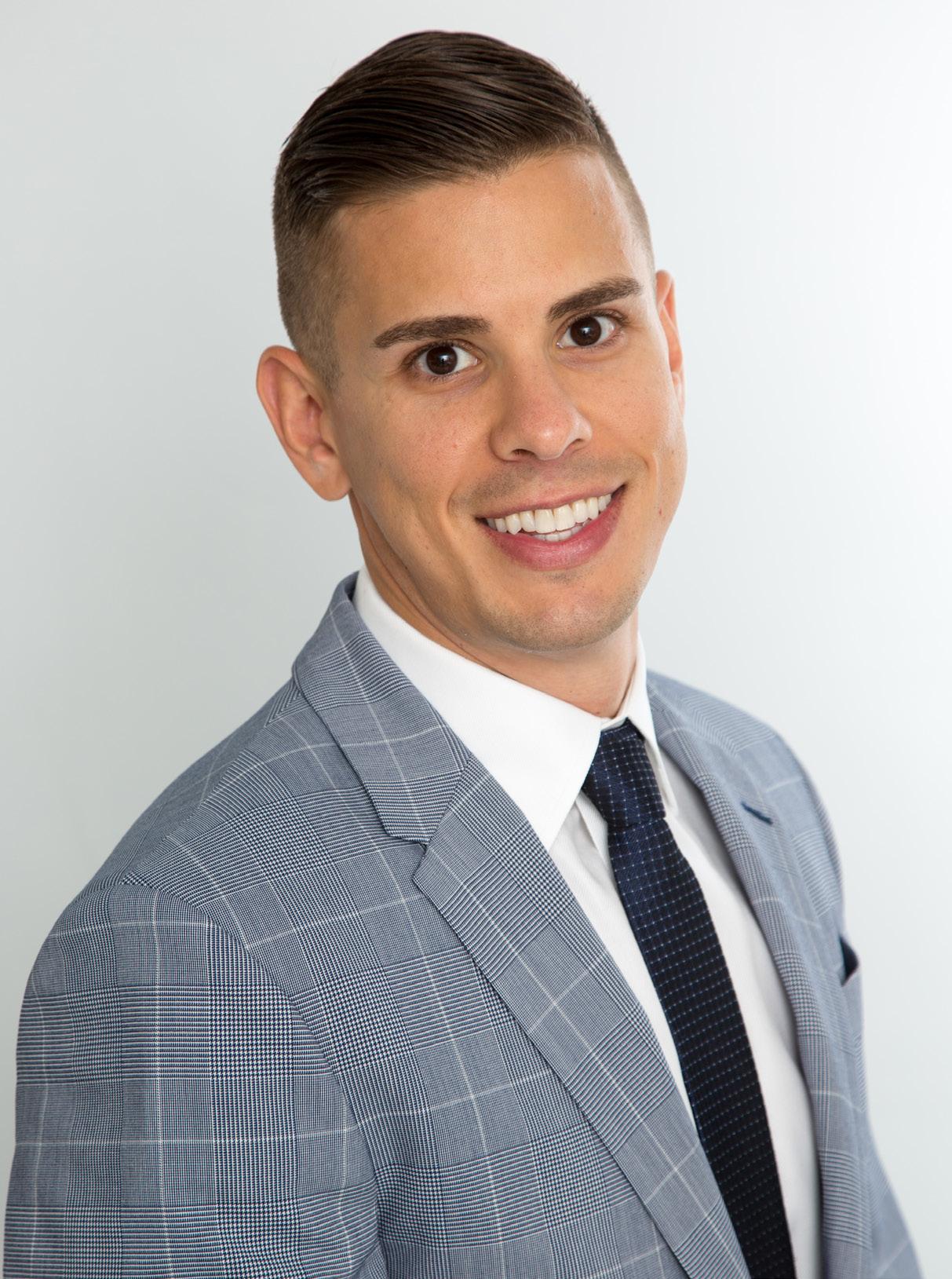
Brad Casemore Chief Customer Officer of PartsSource Inc.
CUSTOMER OFFICER
Brad joined PartsSource in May 2024, stepping into the role of Chief Customer Officer. His path into the healthcare sector, however, was paved long before this leadership position. Growing up as the son of a physician, he was immersed in the world of medicine from an early age. This unique upbringing not only provided him with a firsthand perspective on the healthcare system but also ignited a passion for the industry. Starting out at Children’s Minnesota as an Organizational Development (OD) & Learning Consultant, he quickly immersed himself in aligning strategy, culture, and human dynamics. “That alignment is key to driving organizational velocity and success,” Brad explains.
At Children’s, he participated in several Lean Six Sigma initiatives, honing a systemsthinking approach to transformation. One standout project involved centralizing and standardizing the organizational onboarding process. The results were transformative— enhanced employee engagement, higher satisfaction, and improved first-year retention rates. This accomplishment led to Brad’s first publication, a contribution to the book Creative Onboarding Programs.
After gaining valuable experience in organizational development, Brad transitioned into healthcare technology consulting. Here, he wore multiple hats—developing and delivering Epic training for physicians and nurses,
managing business analysis and quality for technology implementation projects, and leading multi-million-dollar digital transformation programs for CIOs. Along the way, he also educated stakeholders nationwide on the complexities of the Affordable Care Act and HL7 standards, blending technical expertise with business development.
“This phase of my career was both challenging and rewarding,” Brad reflects. “It gave me the opportunity to obtain certifications as a Project Management Professional and Certified Scrum Master, which were invaluable in navigating complex projects.” Eventually, Brad shifted his focus to software, where he has spent the last 13 years. His roles spanned industries, including film, digital asset distribution, stadium and casino guest experience, staffing and recruiting, short-term vacation rentals, corporate real estate, and healthcare.
Brad’s commitment to continuous learning has been a cornerstone of his success. He earned a Master of Science in Business Analytics from the University of St. Thomas, a Lean Six Sigma Black Belt certification from Purdue University, and most recently, a Master Sales certification from Northwestern’s Kellogg School of Management.
Through it all, Brad remains driven by curiosity and a passion for growth. “I’ve always focused on building high-performing teams, leveraging data to inform decisions, and creating cultures where people enjoy their work and have opportunities to grow,” he says. That mindset has positioned him as a leader who embraces challenges and consistently drives impact.
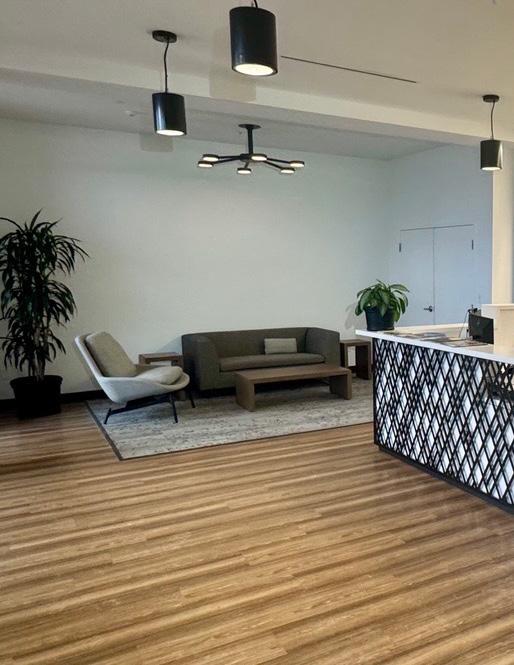
Organizations often sit on a mountain of siloed customer data, struggling to harness it effectively. Brad’s diverse experience across industries, data analytics, organizational dynamics, and digital transformation uniquely positions him to craft data-driven and customercentric strategies. His approach emphasizes creating effortless customer experiences that balance the digital and human touch.
“As Chief Customer Officers, it is our role to ensure these experiences are seamless,” Brad explains, “and to invest in the right technologies to centralize customer data, generate insights, and turn those insights into prescriptive actions that drive impact and value.” He firmly believes that simply having data and insights isn’t enough.

Without actionable outcomes, organizations risk inconsistent interpretations and varied results.
By streamlining data processes, Brad ensures Customer Success Managers (CSMs) spend less time analyzing and more time engaging with customers in meaningful ways. This, in turn, enables impactful conversations that deepen relationships and enhance value delivery.
For Brad, the heart of Customer Success lies in owning customer outcomes and ensuring clients achieve maximum value from their investments. “Customer Success teams need to understand the strategic objectives of their customers,” he says, “and align those goals with the products, services, and expertise we provide.”
By streamlining data processes, Brad ensures Customer Success Managers (CSMs) spend less time analyzing and more time engaging with customers in meaningful ways
But success isn’t limited to technology or adoption rates—it’s also about fostering connections. Brad encourages collaboration within the customer community, where one client’s experience can benefit another. “When we connect customers to share insights and strategies, it’s a win for everyone,” he explains. “Those seeking guidance gain valuable advice, while those sharing their stories take pride in helping others.”
He also stresses the importance of making every customer interaction count. Meetings should never feel obligatory; they should deliver curated insights or opportunities that energize and inspire. “Every touchpoint should leave the customer feeling empowered and valued,” Brad emphasizes.
As PartsSource’s first Chief Customer Officer, Brad’s initial focus has been on establishing a robust foundation for customer-centricity. His approach begins with mapping the entire customer lifecycle, understanding the diverse personas and stakeholders the organization serves, and evaluating every customer touchpoint for optimal experience.
“Customer experience is not one-size-fitsall,” Brad notes. Different customers require tailored engagement models based on their unique needs, preferences, and goals. Instead of relying on a single, streamlined internal operating model, Brad advocates for segmenting customers and aligning engagement strategies to their specific segments. This nuanced approach becomes especially vital as organizations expand their product and service offerings.
At PartsSource, the introduction of a dedicated Customer Success team marks a significant shift.


A cornerstone of the PartsSource strategy is the Value Creation Roadmap (VCR), a simple yet powerful tool that outlines a multi-year strategic plan
By addressing foundational challenges, the team develops customized playbooks that align with each segment. Their mission is clear: to own customer outcomes and drive advocacy through deep connections.
A cornerstone of the PartsSource strategy is the Value Creation Roadmap (VCR), a simple yet powerful tool that outlines a multiyear strategic plan. The roadmap is structured around three key workstreams: Optimize, Expand, and Innovate. “Optimize focuses on driving ongoing adoption and maximizing value,” Brad explains. “Expand looks at increasing the partnership’s impact, and Innovate explores groundbreaking areas for collaboration that push the boundaries of what we can achieve.”
Brad firmly believes that customercentric leadership begins with a missiondriven culture. At PartsSource, that mission is “Ensuring Healthcare is Always On®.” Every employee understands how their role supports this goal. “Customer-centricity is woven into the fabric of our culture,” he says.
The company’s commitment to excellence is further reflected in its performance culture, which is anchored by five growth attributes: acting like an owner, serving with purpose, collaborating to win, adapting to thrive, and challenging the status quo. Brad highlights the connection between employee satisfaction and customer experience: “When we create an incredible employee experience, we naturally deliver an incredible customer experience.”
This focus on both internal and external excellence has earned PartsSource multiple accolades, including recognition as a Top 25 Healthcare Technology Company and a Newsweek Top 200 Most Loved Workplace.
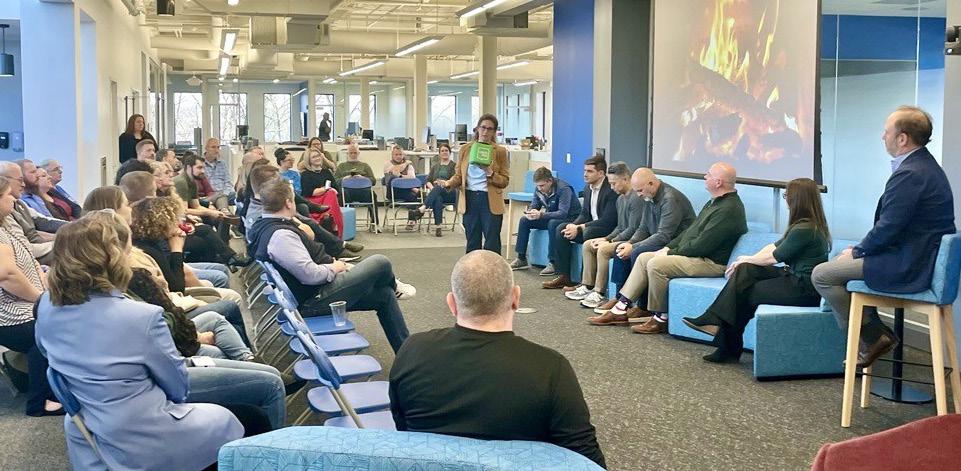
While PartsSource was founded in 2001 as an e-commerce parts provider, its mission evolved significantly after Phil Settimi, MSE, MD, joined as President and CEO in 2014. His time spent directly with customers unveiled a web of inefficiencies plaguing biomedical technicians. From the long hours spent searching for replacement parts to procedural rooms sitting idle due to lengthy approval processes, the system was clearly broken. Settimi’s deep dive revealed alarming challenges, including supplier stock-outs, logistical failures, and poor data management. These inefficiencies were creating significant financial strain and operational setbacks for healthcare providers.
This pivotal insight led to the development of a groundbreaking managed service solution tailored to the unique needs of clinical engineering teams. The solution wasn’t just about replacing parts—it was about reimagining the medical device supply chain. PartsSource introduced a platform purpose-built to offer healthcare providers the highest-quality, most
cost-effective, and reliable supply options. The launch of PartsSource PRO®, the first of its kind, established the company as a trusted partner to Healthcare Technology Management (HTM) leaders nationwide.
Brad, reflecting on the company’s trajectory, emphasized the importance of understanding the customer experience across every touchpoint. “PartsSource isn’t just another SaaS company,” he shared. “It’s a unique ecosystem that required me to immerse myself in its intricacies while learning directly from our customers to identify opportunities for improvement.”
PartsSource’s consultative approach focuses on tailoring procurement solutions to align with each client’s HTM profile and spend analysis. The impact is transformative: lowering healthcare costs, increasing clinical availability, and improving patient care quality. With its evidence-based PRECISION Procurement ® tools, visual analytics, and peer benchmarking capabilities, PartsSource PRO equips HTM teams with powerful solutions.
The results speak volumes. Brad highlighted measurable outcomes such as workflow savings of 85 minutes per day per technician, a sixfold improvement in product quality with a Quality Return Rate of just 0.44%, and an impressive 23% reduction in immediate costs. These achievements reinforce PartsSource's commitment to creating lasting value for healthcare providers and the patients they serve.
Supply chain disruptions are a reality for nearly every hospital and healthcare system, with 99% reporting shortages that force them to scramble for alternative vendors. When the stakes involve mission-critical parts and services, the pressure to act swiftly and effectively intensifies.
Recognizing this, PartsSource took a bold step forward by publishing its inaugural State of Healthcare Technology Management Insights
Report. This comprehensive report serves as a guide for healthcare leaders seeking datadriven strategies to overcome supply chain challenges and improve clinical availability while reducing costs.
The report offers a deep dive into the evolving landscape of healthcare technology management. It explores the shift toward datadriven decision-making and shares actionable insights from HTM leaders who are navigating these challenges. “We aim to empower healthcare leaders,” Brad explained, “by arming them with the information they need to optimize clinical availability and make impactful changes.”
PartsSource’s Enterprise clients already benefit from regular, data-rich discussions with their Account Managers, but publishing this data set more broadly advances the company’s mission of Ensuring Healthcare is Always On®. The report presents never-beforeseen data across five key opportunities for healthcare providers to reduce costs and enhance clinical availability.
With its evidence-based PRECISION Procurement ® tools, visual analytics, and peer benchmarking capabilities, PartsSource PRO equips HTM teams with powerful solutions
Recognizing the mounting pressures health systems face to reduce costs while maintaining high-quality care, PartsSource has taken a leadership role in providing actionable insights
This initiative reinforces PartsSource’s role as more than a supply chain provider—it positions the company as an essential partner in helping healthcare systems thrive amidst uncertainty. By translating complex challenges into actionable solutions, PartsSource is enabling hospitals and healthcare providers to achieve measurable results and fulfill their critical mission of delivering reliable patient care.
At PartsSource, success isn’t just about delivering solutions—it’s about creating enduring value for customers. To achieve this, the company employs a comprehensive set of metrics, including NPS (Net Promoter Score), CSAT (Customer Satisfaction), Retention, and a proprietary Customer Loyalty Index (CLI). These tools provide deep insights into customer experiences and help guide the company’s continuous improvement efforts.
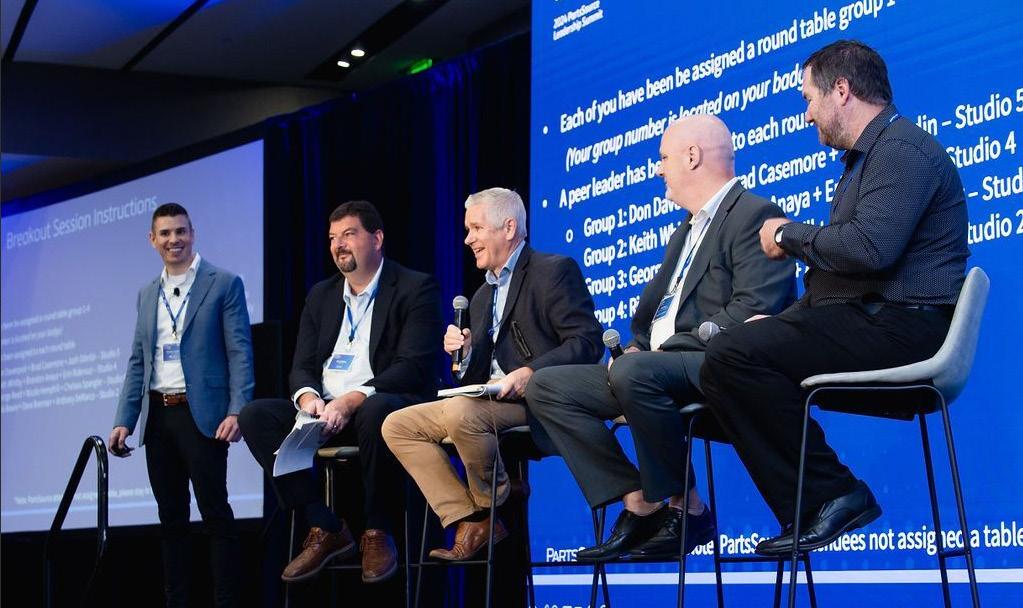
A key step forward has been the implementation of Gainsight, a centralized customer intelligence platform designed to provide a unified view of customer needs and behaviors. In addition, PartsSource is actively investing in a dedicated Customer Success team whose sole focus is driving continuous value for clients, fostering relationships that last well into the future.
But PartsSource's vision extends beyond its immediate customers—it aims to build a sense of community across the Healthcare Technology Management (HTM) industry. Recognizing the mounting pressures health systems face to reduce costs while maintaining high-quality care, PartsSource has taken a leadership role in providing actionable insights.
The company recently released a whitepaper exploring medical equipment management strategies. The findings reveal a striking opportunity: by taking a strategic, data-driven approach to medical equipment maintenance and repair—just a small portion of a healthcare system’s budget—organizations could save up to $2 billion in direct costs annually. Beyond financial savings, these strategies can dramatically improve equipment availability and uptime, ensuring that critical medical devices are ready when patients need them most.
“This is a pivotal moment for healthcare systems,” Brad noted. “We’re seeing a shift toward proactive medical equipment management, and it’s exciting to know that PartsSource is helping lead this transformation.”
Innovation at PartsSource isn’t confined to technology—it’s a collaborative effort that blends advanced solutions with the collective
expertise of customers and industry partners. The company is laser-focused on its mission: ensuring healthcare is always on.
A cornerstone of this mission is redefining the customer experience. As Chief Customer Officer, Brad has made it his priority to shape a next-generation Customer Experience organization that drives faster, more impactful collaboration with clients. While the specifics of what’s coming remain under wraps, Casemore emphasized that everything the team does supports minimizing clinical device downtime, ensuring that critical technology is always available to support patient care.
“Building innovative technology is just one piece of the puzzle,” he explained. “True customer value emerges when we harmonize people, processes, and technology. That’s where the Customer Experience organization plays a pivotal role—helping our clients digitally transform their operations and unlock greater clinical capacity.”
Brad’s role as the company’s first Chief Customer Officer brought unique challenges— and opportunities. Educating peers on the value and responsibilities of a CCO requires patience, communication, and a commitment to leading by example. “I tend to move fast,” he admitted, “but I’ve learned the importance of slowing down to bring everyone along for the journey. Building credibility and trust is essential to driving change.”
As PartsSource continues to push boundaries, the focus remains clear: empowering healthcare providers with innovative solutions that ensure clinical excellence and operational efficiency. With its unwavering dedication to advancing the healthcare industry, the company is poised to make an even greater impact in the years to come.
Janet is an MBA-qualified Strategic Partnerships expert and best-selling author. She is a three-time founder, including a successful time management Amazon business. Through her work, Janet is dedicated to helping people, particularly unpaid caregivers, reclaim their time and improve their work-life balance by leveraging behavioural science and AI to reduce stress and promote well-being.

Janet Martin CEO & Founder of Our Time HQ

In the fast-evolving world of artificial intelligence (AI), we are on the brink of transformative change. AI has the potential to revolutionize everything from healthcare and education to transportation and work-life balance. But there is one critical element often overlooked in the development of this powerful technology—diversity.
Shaping the future of AI isn’t just about advancing algorithms and tools. It's about ensuring that AI solutions are built with a deep understanding of the diverse needs and experiences of people, particularly those whose voices have historically been underrepresented— like the frontline workers who often carry the weight of society's most pressing challenges.
As AI continues to evolve, its impact is growing in every corner of society. However, if AI is to serve all people, it must reflect the diversity of those it seeks to benefit. People from different backgrounds, ethnicities, genders, and life experiences bring unique perspectives that can help guide AI development in more inclusive and ethical ways.
Diverse teams lead to better AI. Research shows that diversity is not only essential for innovation but also for reducing biases in technology. AI models trained on homogeneous datasets are more likely to produce outcomes that reinforce existing stereotypes or marginalize certain groups. By including a wider range of voices in the design and development process, AI can be built to serve everyone—ensuring fairness, equity, and the betterment of society. One group that is too often overlooked in the conversation about AI development is frontline
workers—those who are directly impacted by the technology but rarely have a seat at the table when decisions are made. These are the individuals whose lives will be significantly affected by AI, yet they often do not have the opportunity to influence its creation.
Frontline workers—healthcare providers, social workers, emergency responders—make up 80% of the global workforce and play an integral role in society. Despite their importance, these individuals are often marginalized when it comes to advancements in technology. AI solutions created without input from these workers risk missing critical nuances that could make technology more effective and less burdensome.
Take, for example, frontline workers who are unpaid caregivers. This group includes parents caring for dependent children or those who support relatives, neighbors, or friends with significant health issues, disabilities, or the demands of old age—all without financial compensation. These individuals juggle complex roles: managing the needs of their loved ones while balancing work, family, and personal well-being. Often, this heavy load is shouldered with insufficient recognition or support, leaving them emotionally and physically strained.
This burden impacts productivity, increases absenteeism, and drives turnover, yet at least 39% of caregivers avoid discussing their challenges at work, believing nothing will change.
To address this, workplaces and AI solutions must also focus on caregivers’ lived experiences.
AI models trained on homogeneous datasets are more likely to produce outcomes that reinforce existing stereotypes or marginalize certain groups
Empathy-driven design can create tools that alleviate stress, boost efficiency, and empower these essential workers—ensuring their voices shape the future of technology.
Frontline workers bring invaluable insights that can inform the development of more effective, user-friendly AI solutions. Their lived experiences help identify pain points and offer practical solutions that may not
be immediately obvious to those who have not walked in their shoes. Listening to these voices can shape technology that truly makes a difference in their daily lives.
By incorporating diverse perspectives— especially from frontline workers—we ensure that AI solutions are not only technologically sound but also deeply human-centered. The goal is to create solutions that make sense for the people who will use them most, helping to reduce stress, improve time management, and foster greater well-being.

The AI revolution offers an incredible opportunity to reshape society in ways that prioritize equity, well-being, and community
The AI revolution offers an incredible opportunity to reshape society in ways that prioritize equity, well-being, and community. However, this can only happen if we are intentional about who is involved in the conversation. Diverse voices must be integrated into the design and deployment of AI to ensure that the technology works for everyone, including those who are often left behind. It’s time to change the narrative. As AI continues to evolve, we must actively involve frontline workers in the development process. Their insights are crucial for creating AI that is not only innovative but also empathetic and aligned with the needs of those it aims to serve.
In the coming years, AI will continue to shape the way we live, work, and interact. But for AI to truly fulfil its promise, we must make sure that it is developed with a deep understanding of the diverse needs of society. This includes listening to those who are often overlooked— especially frontline workers. By valuing diversity and amplifying the voices of those who experience the daily challenges AI aims to solve, we can build technology that truly improves lives. Together, we can create a future where AI not only drives innovation but also fosters a more inclusive, empathetic, and connected world.

Jasmine Lombardi Chief Customer Officer, Locus Robotics
CHIEF CUSTOMER OFFICER
Jasmine Lombardi’s leadership story is one shaped by more than 30 years of diverse experience across industries like insurance, finance, clinical trials, robotics, and beyond. From managing global product operations to driving customer success in cuttingedge automation, her path is rich with lessons in adaptability, collaboration, and resilience.
One of her first defining moments came as a Program Manager at PAREXEL International in 2005. Tasked with leading a global initiative to implement a time-tracking web application for over 6000 employees, contractors and agency temporaries globally —a project that had been written off as impossible—Jasmine and her team defied expectations. With strong support
from management and a dedicated engineering team, they completed the project ahead of schedule and under budget. "Never, Never, Never Give Up," reads a plaque she was given to commemorate this effort, a mantra that still drives her approach today. This early success highlighted for Jasmine the immense power of cross-functional teamwork and the importance of adaptability and grit.
Her career has never been confined to a single industry or role. Moving from software design and development to consulting and customer service, she developed a unique perspective on what makes organizations tick. Every shift, Jasmine reflects, refined her adaptability and deepened her appreciation for the nuances of
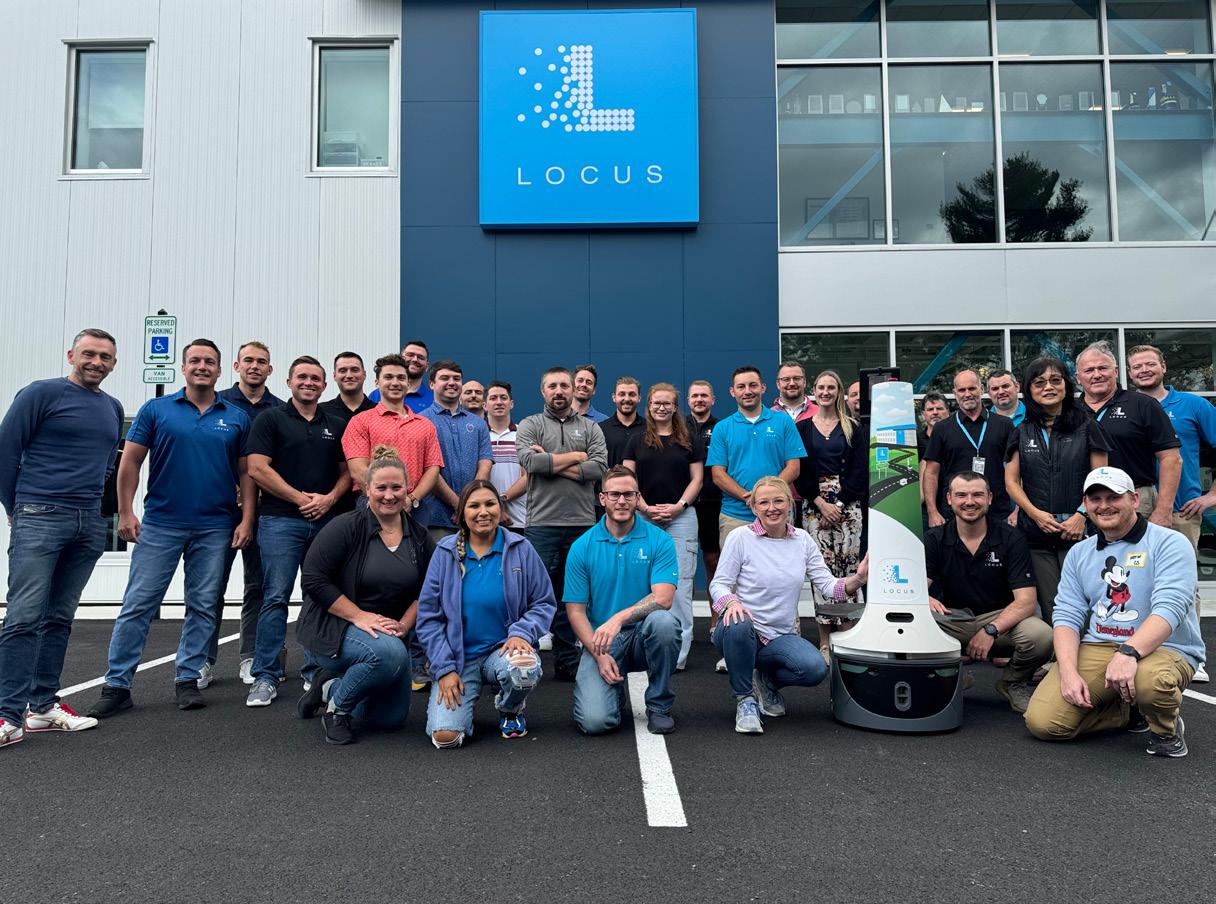
different business cultures. These transitions weren’t just professional moves—they were opportunities to learn, collaborate, and drive value in fresh ways.
At Locus Robotics, where Jasmine has led and scaled a global Customer Success team of over 110 people, she’s instilled a culture rooted in empowerment, accountability, and continuous growth. “We’ve created a culture grounded in strong relationships, open communication, transparency, and mutual respect,” she shares.
For Jasmine, leadership is about nurturing a team that views setbacks as stepping stones, embraces change, and prioritizes both customer and team innovation.
Guiding her team through challenges like the economic downturns of the early 2000s, the global COVID-19 pandemic, and the rapid technological evolution in robotics and AI hasn’t been easy. Yet, it’s during these times that Jasmine’s principles—integrity, empathy, and transparency—have become most crucial. These experiences cemented her understanding that a steady and empathetic leadership style is key, even in times of uncertainty.
Jasmine credits her roles at companies like Barracuda Networks, Aspen Technology, and Prospero Technologies for building the foundation of her leadership philosophy. At Barracuda, she learned the value of agility in the
fast-paced tech world, a skillset that’s proven invaluable in the dynamic robotics sector. Aspen Technology reinforced the importance of strategic alignment and scalability, while Prospero Technologies taught her the art of strong customer relationships and engagement. These experiences exposed Jasmine to a wide range of company sizes, challenges, and customer needs. She learned to navigate the demands of both enterprise-level clients and smaller operations, equipping her to lead effectively at Locus. “Working across these companies honed my adaptability and strategic thinking,” she notes. This ability to shift gears seamlessly and connect with customers on all
levels has been instrumental as Locus scales and thrives in a competitive market.
Today, as Chief Customer Officer at Locus Robotics, Jasmine focuses on building strong relationships and fostering a culture of continuous improvement. She believes in a customer-first approach, ensuring that Locus’s technology not only meets but anticipates customers’ needs. “Safety is a cornerstone of our automation efforts,” she emphasizes, “and we prioritize it in every implementation to ensure smooth integration with customer workflows.”
Ultimately, Jasmine’s vision for customer success is about collaboration and long-term impact. She aims to make every customer feel
like a true partner in the innovation process, reinforcing Locus Robotics’ position as a trusted leader in the world of automation and human collaboration. By fostering a culture that thrives on problem-solving and anticipates future needs, Jasmine ensures her team is always ready to drive excellence in this rapidly evolving industry.
Fostering a customer-first culture at Locus Robotics isn't just a strategic initiative—it’s the very foundation of the company’s success. Jasmine has been instrumental in this mission, ensuring that every facet of the organization is aligned toward one unified goal: maximizing customer value throughout their entire journey with Locus Robotics. “Our success hinges on keeping every team—from product management and engineering to sales and customer success—connected to our customers' feedback, needs, and goals,” she explains. This tight alignment ensures everyone is laser-focused on delivering solutions and services that drive meaningful results for customers.
Building such a culture begins with instilling a sense of empathy, continuous improvement, and proactive problem-solving within her team. Jasmine champions an environment where employees are encouraged to grow, hone their skills, and share valuable insights, all while striving to find new ways to enhance Locus Robotics’ offerings. This focus on growth isn’t just about internal development; it directly translates into better support and innovative solutions for customers.
A cornerstone of this customer-first strategy is the robust voice-of-customer program. Through this initiative, Locus Robotics actively listens and responds to feedback, making sure customer
Jasmine encourages her teams to anticipate issues before they emerge, which allows Locus Robotics to optimize operations and preempt challenges, saving customers time and resources
input informs decisions at every level of the company. Jasmine notes, “When we listen attentively and act on what we hear, we prove to our customers that their success is our priority.”
This commitment builds trust, fosters long-term partnerships, and sets Locus apart as a leader in collaborative robotics.
Jasmine also prioritizes a proactive approach to problem-solving. She encourages her teams to anticipate issues before they emerge, which allows Locus Robotics to optimize operations and preempt challenges, saving customers time and resources. More than that, her teams work to understand customers’ operations comprehensively, often going beyond the
immediate technology to become trusted advisors who add value across the board.
“Understanding our customers’ unique workflows and providing tailored, consultative support has been critical,” Jasmine says. This strategic focus not only boosts customer loyalty but also reinforces Locus Robotics’ reputation as a partner that invests in understanding and supporting broader goals. The result? A stronger company driven by trust and continuous growth.
In the fast-paced world of robotics and automation, balancing rapid technological advancements
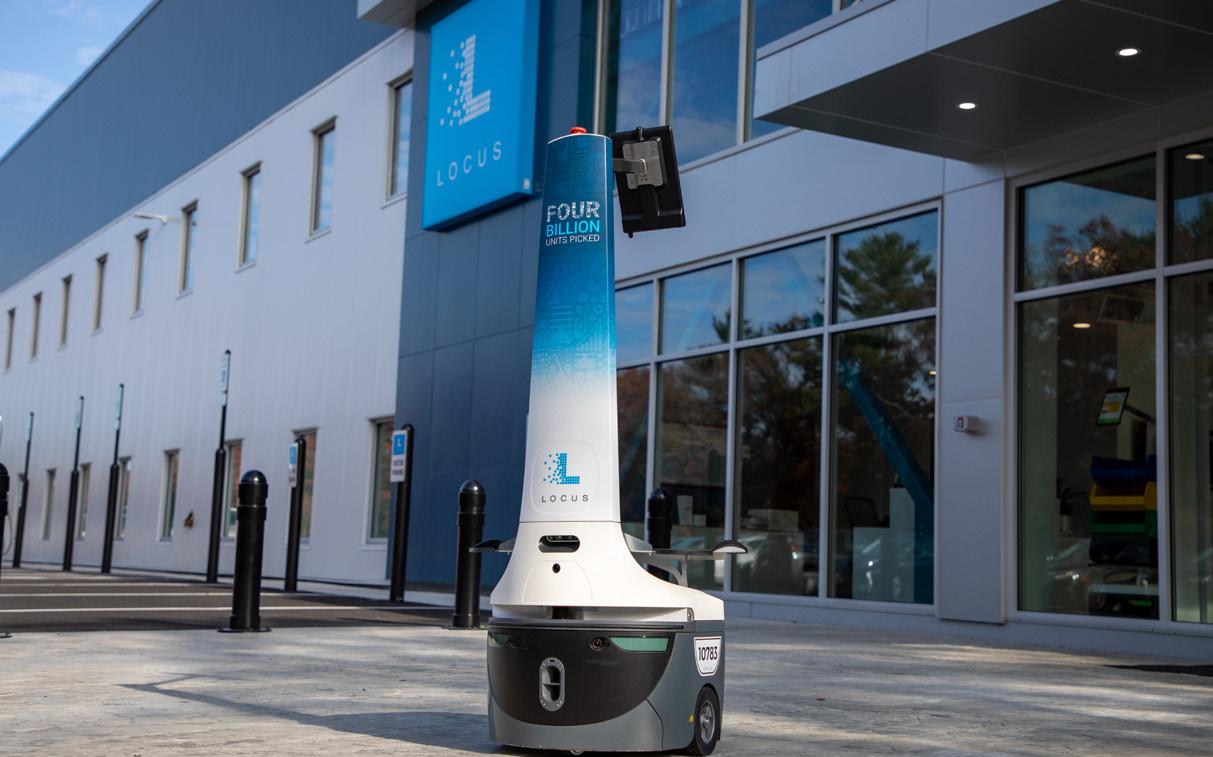
By listening carefully, acting strategically, and fostering a customer-first culture, Locus Robotics has solidified its status as a leader in customer-focused automation
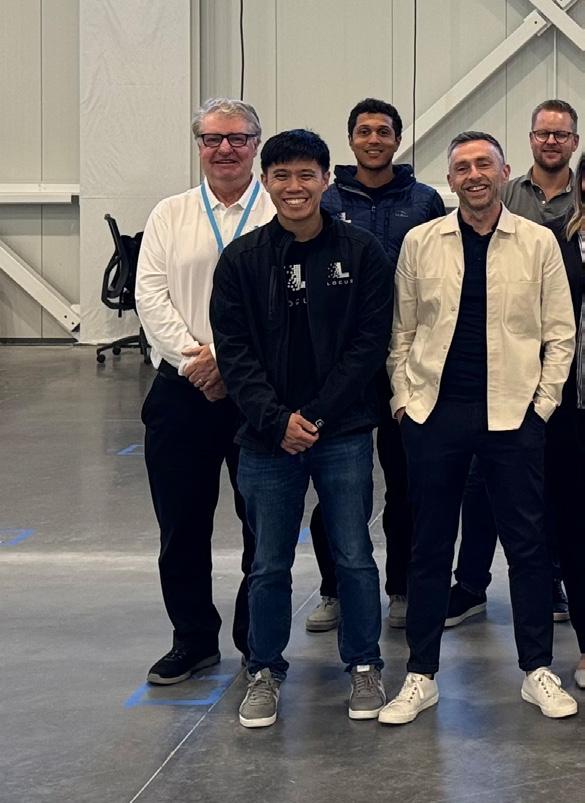
with evolving customer needs is no small feat. Jasmine, with her extensive experience as Chief Customer Officer at Locus Robotics, knows this firsthand. From navigating high expectations to driving change management, she’s mastered the art of proactive customer engagement. “Our customers often find comfort in their existing environments, so we must demonstrate the value of change while being empathetic and supportive throughout the transition,” she explains.
To address resistance to new technologies, Jasmine has built a comprehensive, proactive strategy centered on strong listening skills and
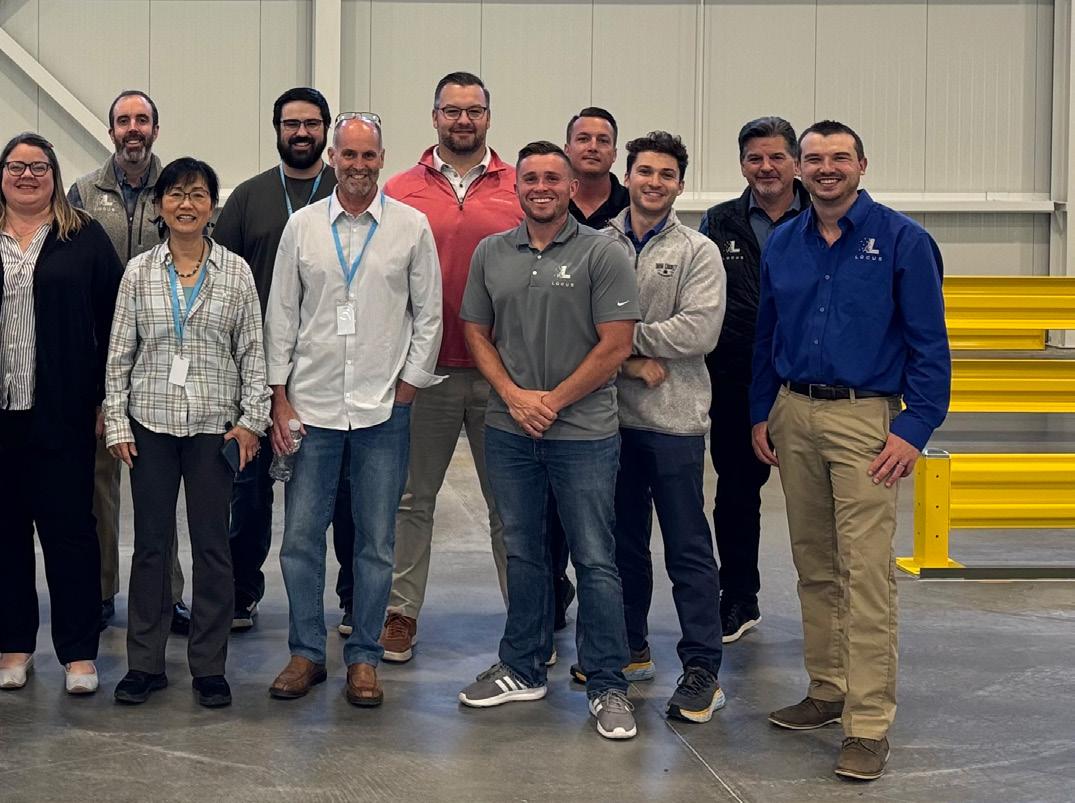
transparent communication. She emphasizes the importance of collaboration and education, helping customers grasp the tangible benefits of Locus Robotics’ solutions. This approach not only reassures clients but also positions the company as a trusted partner in their transformation. By aligning Locus Robotics’ offerings with customers’ ROI and business objectives, the company consistently delivers results that highlight the value of their technology.
Managing high expectations is another challenge that Jasmine meets head-on. In the high-stakes world of global fulfillment, she
fosters a culture that prioritizes deep customer engagement, continuous support, and proactive problem-solving. As Locus Robotics expands to over 300 deployment sites worldwide, Jasmine has made scalability a key focus. Her investment in training, standardized processes, and technology ensures that her team can deliver high-quality support, no matter where customers are located.
Through her multi-faceted approach, Jasmine has turned challenges into opportunities. By listening carefully, acting strategically, and fostering a customer-first culture, Locus
To remain at the forefront of innovation, Locus Robotics is collaborating closely with engineering and product development teams, integrating these advancements into their Autonomous Mobile Robots (AMRs)
Robotics has solidified its status as a leader in customer-focused automation.
In an industry defined by relentless innovation, staying ahead of customer expectations requires more than just cutting-edge technology. Jasmine understands this well. As Chief Customer Officer at Locus Robotics, she’s cultivated a multi-faceted approach that not only keeps the company at the forefront of warehouse automation but also continuously delivers transformative value to clients.
Central to this approach is active listening.
“We make it a priority to understand our customers’ evolving needs and challenges,” Jasmine shares. This means collecting and acting on feedback while staying informed of broader industry trends and emerging technologies. By combining these insights, Locus Robotics ensures its solutions remain relevant and forward-thinking.
Collaboration also plays a critical role. Jasmine encourages brainstorming sessions among teams to explore customer problems from different angles, often leading to creative,
tailored solutions. The result? A culture where innovation thrives, driven by both external insights and internal ingenuity. This dedication to innovation enables Locus Robotics to exceed customer expectations time and time again.
To integrate customer success with core functions like engineering, sales, and product development at Locus Robotics, Jasmine focuses on fostering a collaborative, data-driven culture. Regular crossfunctional meetings are a staple of her strategy, providing a forum to review challenges, share customer feedback, and align priorities. This ensures every department remains connected to customers' evolving needs.
“We leverage data from support cases, surveys, and direct customer interactions to inform our decisions,” Jasmine explains. By collaborating closely with teams like engineering and product management, her department can address not only immediate concerns but also improve overall offerings. This structured approach ensures continuous improvement and creates a feedback loop that keeps the company responsive and agile.
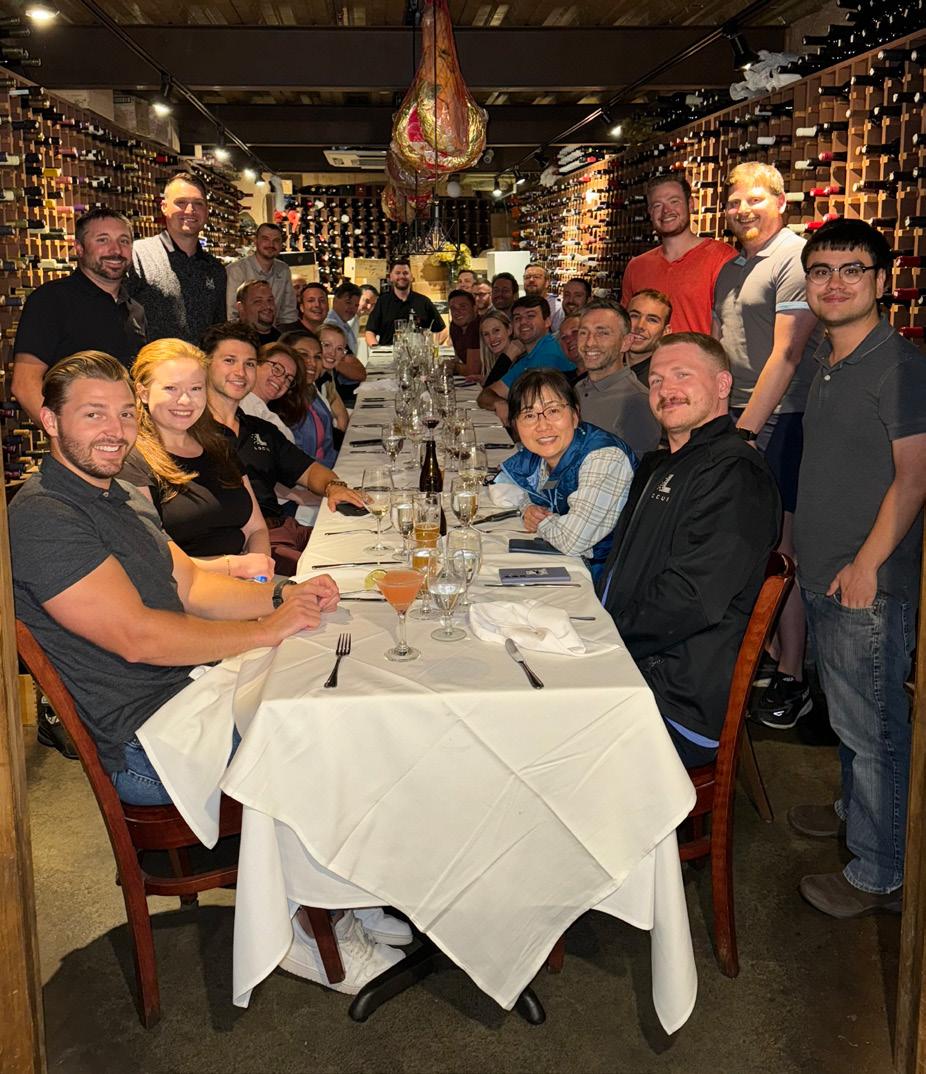
Transparency with customers is equally important. Jasmine emphasizes the need to keep customers informed about ongoing work and improvements, reinforcing Locus Robotics’ commitment to their success. Internally, she hosts regular training and knowledge-sharing sessions, bringing in cross-functional teams to keep everyone aligned and informed. This cohesive, transparent approach ensures that customer success isn’t siloed but integrated
deeply into Locus Robotics’ operations, driving the company forward and enhancing its impact in the world of automation.
Jasmine sees a future rich with emerging trends in customer success and robotics, poised to redefine industry standards. One of the most significant developments she identifies is
the growing influence of data and predictive analytics. “With robotics solutions generating vast amounts of data, the ability to analyze this information in real-time will allow us to predict and proactively address customer needs,” she explains. The company recently launched LocusHub, featuring cutting-edge analytics tools and data-driven capabilities designed to optimize customer operations and address challenges before they arise.
Jasmine emphasizes the pivotal role of AI, machine learning, and advancements in sensor technology that promise to revolutionize automation. From enhancing operational efficiency to reducing the need for manual intervention in critical tasks like automated
picking, these technologies are driving a new era of accuracy and productivity. To remain at the forefront of innovation, Locus Robotics is collaborating closely with engineering and product development teams, integrating these advancements into their Autonomous Mobile Robots (AMRs). The result is a suite of solutions finely tuned to meet and exceed the evolving expectations of their customer base.
Another trend Jasmine foresees is the rising demand for hyper-personalization in the warehouse automation industry. Companies want customized solutions that cater to their unique processes and workflows. Addressing this need, Locus Robotics has developed LocusONE, a flexible platform that allows for
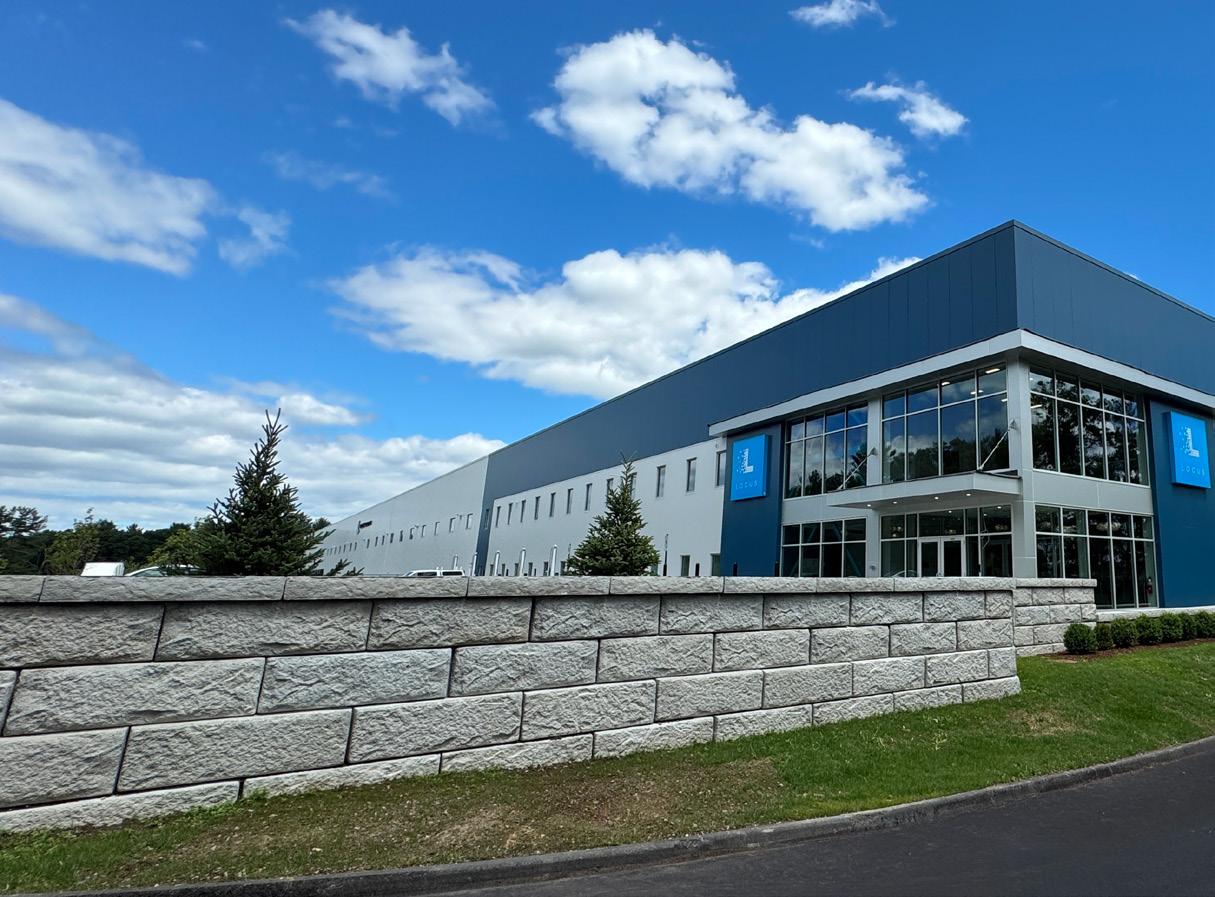
Over
the next five years, Jasmine aims to scale global operations, deepen customer partnerships, and lead innovation in warehouse automation
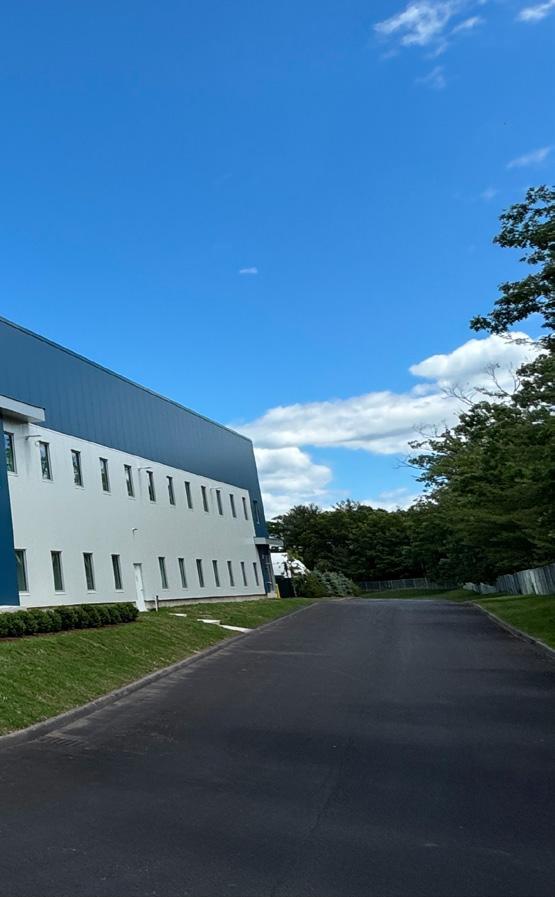
the seamless configuration of AMRs and support systems. This adaptability ensures that every client’s specific needs are met with precision. “We’re committed to fine-tuning our solutions to each customer’s exact requirements,” says Jasmine.
Equally transformative is the shift toward proactive, consultative partnerships in customer success. Businesses are increasingly seeking trusted advisors who can guide them through technological shifts and maximize their automation investments. Locus Robotics is building a customer success team that goes beyond traditional support, offering strategic insights to help clients adapt to change, build resilience, and secure long-term value. Jasmine is clear: “By embracing these trends—AI, machine learning, improved robotics capabilities, and proactive partnerships—Locus Robotics is setting new benchmarks for success in warehouse automation.”
Jasmine's vision extends beyond technological advancements; she hopes to leave a lasting legacy in the industry. Recognized as one of the most
influential Chief Customer Officers of 2024, she champions customer success as a strategic driver of business growth and innovation. She believes that CS functions should evolve from reactive support roles into proactive partners, unlocking value for customers in ways that extend beyond mere troubleshooting. Her passion for customer empowerment is evident: “I’m passionate about showing how customer success can become a proactive partner, helping customers unlock the full potential of their investments and adapt to future challenges.”
Her journey as an Asian, female leader in the predominantly male-dominated fields of logistics and technology has also shaped her mission. Jasmine aspires to inspire underrepresented groups to pursue leadership roles, advocating that hard work and self-belief can open doors, regardless of background. “I want to show that paths can be created for all, no matter where you come from,” she says, offering a message of empowerment and inclusivity.
Jasmine is equally committed to humancentered technology. She has witnessed how Locus Robotics’ solutions reduce the physical demands placed on warehouse associates, enabling them to work with greater ease and leave their shifts with more energy for life beyond work. “Technology can be both empowering and human-centered,” she notes, emphasizing that the company's advancements are designed with people’s well-being in mind.
Looking ahead, Jasmine envisions significant growth for Locus Robotics. Over the next five years, she aims to scale global operations, deepen customer partnerships, and lead
innovation in warehouse automation. Her vision centers on making Locus an essential partner for businesses aiming to optimize efficiency, safety, and productivity in increasingly demanding fulfillment environments. Achieving this requires a robust, well-supported Customer Success organization, capable of delivering unparalleled service and insights on a global scale.
“We’re focused on solving more challenges for our customers and addressing their evolving needs,” Jasmine shares. This includes ensuring that Locus Robotics not only delivers a high return on investment but also creates technology that enhances the work experience for warehouse associates. The well-being and efficiency of these associates remain at the heart of Locus’s mission. As their solutions expand internationally, Jasmine is dedicated to building a workplace culture at Locus where employees feel motivated, engaged, and equipped for success.
Scaling the Customer Success organization is a strategic priority. Jasmine plans to strengthen voice-of-customer programs to capture vital feedback that drives forward-looking innovation. This approach will allow Locus Robotics to stay agile and responsive, aligning product and service offerings with real-world customer needs. Collaboration is key: “I see my role as pivotal in aligning cross-functional teams to keep us agile and customer-centered,” she states.
By championing proactive customer partnerships and harnessing the power of cutting-edge technology, Jasmine Lombardi is confident that Locus Robotics will continue setting the industry standard. Her legacy promises to be a blend of strategic leadership, a commitment to ethical and human-centered technology, and a vision of customer success as a force for positive industry change.


Genelle Aldred is a Communications and Media Advisor to C-suite clients. As a broadcaster, she has worked as a journalist, newsreader, and commentator for the BBC, ITV, ITN and Sky News. She is also a sought-after keynote speaker, podcast guest, and roundtable facilitator. Genelle also has senior leadership experience in TV Channel Management, digital strategy, and as a Director of Communications. She brings this deep and wide experience to her comms practice and is able to train as well as advise. Genelle’s recent TEDX, book, and TV appearances prove she is still on her game and can bring that expertise to her clients.

Communications Trainer and Strategic Media Advisor at Genelle Aldred Consultancy
As the landscape of media communications continues to evolve, leaders must adapt by staying true to their values, leveraging their own channels, and using emerging tools like AI strategically. Most importantly, they must ensure that their messaging is consistent, clear, and authentic, both externally and internally. Leadership communication is about more than just making noise; it's about making an impact that aligns with long-term goals and inspires trust across the board with all stakeholders.
Media communications have transformed into something vastly different from what we once knew even five years ago. The evolution continues at such a pace that leaders need to stay not only current but ahead of the curve.
The leadership messaging conundrum is getting the balance between strategic, trickledown communication and authenticity. Leaders today are expected to do more than manage—they need to inspire. Employees,
The leadership messaging conundrum is getting the balance between strategic, trickle-down communication and authenticity
stakeholders, and clients all look to leaders to set the tone and not just in strategic direction. The modern workforce is more discerning. They crave leaders who are genuine, empathetic, and capable of engaging in difficult conversations with compassion - it all needs to feel real.
While media training is essential, many leaders spend more time communicating internally than they do with the press. Yet, they often overlook the need to be just as prepared for internal communications as they are for external media spots. Town halls, allstaff emails, and one-on-one meetings are where trust is built or broken. After all, the people reporting up to you are the ones who will execute your vision, or not. How you land your messaging with them is crucially important. Leaders must be equipped to handle difficult questions, manage conflicting interests, and communicate clearly in these settings.
However, this doesn’t mean sharing everything. There is also a balance to strike between transparency and the need for discretion, timing is also important. Leaders must ensure that, even when they can’t say everything, they remain honest and true to their core values. It’s important to remember that many of your team are hanging onto your every word.
A well-prepared leader is one who avoids the pitfalls of people-pleasing—telling different groups what they want to hear. In today’s world, mixed messaging can be catastrophic, especially when information can be shared quickly and widely. Communication coaching and advice is a must have for all senior leaders, an external and trusted voice is a secret weapon to getting this right.
Many aspire to be seen as thought leaders but thought leadership is a title bestowed by others, not one you give yourself. You earn it by sharing ideas that others follow. This means that content should be targeted carefully. Who is the audience? What do they want or need to hear? What unique perspective can you bring?
Once you clarify these questions, you can ensure your content has a purpose beyond merely existing in the digital ether. Strategic communication should be intentional. Avoid the temptation of mission creep—where leaders speak on multiple topics without cohesion— diluting your core message.
This is crucial as a leader’s words can create a halo effect on their organization. This can be a positive influence, helping to drive the company’s messaging forward, or it can backfire, damaging the brand’s reputation. By working on mastering your messaging it creates a positive and aligned message between the people leading an organization and the brand.
It’s also about being selective in how your organization’s voice is projected and ensuring that those who speak on your behalf reflect your values. Employees are extensions of your brand, and their words and actions can influence how the organization is perceived. Ensuring alignment across all spokespeople is important. In my experience, the more senior a person, the more likely they’ll go rogue, and more junior people are often too scared of the consequences to go off message. The more resistant people are to training, the more likely they are to need message clarity and discipline.
Strong leaders are those who navigate crises effectively. They step up, communicate, and manage the situation with transparency. The truth is, that many crises are about managing perceptions, not just addressing the facts. In this day and age, perception often becomes the reality that organizations must grapple with.
When crises occur, silence can be fatal. Leaders who delay communication, waiting until they have a “perfect” response, allow others to fill the void. Speculation, misinformation, and fear can spread rapidly. Instead, frequent updates—however brief—reassure stakeholders that you are on top of things. Even an update of “no new updates” keeps people informed and alleviates uncertainty.
Are you missing the 24/7 broadcasting opportunity?
Organizations often overlook their own channels as powerful broadcasting platforms. LinkedIn, Instagram, TikTok, and Twitter are not just social media—they are 24/7 broadcasting stations. You have the ability to share your message whenever and however you choose. While external media attention is always valuable, don’t discount the power of your own platforms. Repurpose content, create new formats and think of your channels as a constant stream of programming. This way, you can engage with stakeholders directly and consistently.
However, you have to navigate this landscape effectively, it’s crucial to ask the right questions about what you want to achieve upfront. When creating content that may go online, consider where it might be used in the future and how
it aligns with your brand’s long-term values. A simple solution to avoid potential pitfalls is ensuring that the messaging you put out remains true to your values—this is the safeguard against trends shifting and taking your words along with them.
Today, a piece of content is no longer confined to the moment in which it was created.
A video clip you recorded a year ago can reappear in a different context, reinterpreted, perhaps misinterpreted, by a new audience. One piece of content can be turned into a dozen different formats: video clips, articles, infographics, or shared alongside other leaders’ thoughts. And while this is brilliant for prolonging content's lifespan, it also means it can pop up in unexpected ways and at unforeseen times.
Imagine something you said during the COVID-19 lockdown—when the world’s view of diversity, inclusion, and work was evolving—surfacing today. What was true and relevant then might not hold now, and this is where the challenge lies for leaders. The internet is a time machine that can bring your past words into the present, often without context. This reality should make all leaders think more carefully about the content they create and share. It shouldn’t make you avoid it, but you have to think about several possible outcomes.
Leaders must stay strategic, not just reactive. It's essential to maintain consistency in messaging, aligning it with your longterm goals rather than catering to short-term trends. Stakeholders respond to clarity, and a
As a leader in media communications, AI tools allow you to transcribe speeches, sort through thoughts, and even stress-test messages
streamlined, thoughtful message builds your reputation while managing their expectations. It’s back to navigating strategy and authenticity.
Tech efficiency needs human intelligence
Artificial intelligence (AI) is already reshaping how we prepare and deliver messages. As a leader in media communications, AI tools allow you to transcribe speeches, sort through thoughts, and even stress-test messages. While AI helps streamline the work, it’s crucial not to lose the human touch that makes communication truly impactful. AI can make things efficient,
but it is still up to human intelligence to make things exceptional.
Embrace the technology, use it to your advantage, but remain the driver of innovation. Machines can sort through data, but only humans can add the nuance, emotion, and authenticity that resonate with audiences.
The world in which we operate is changing rapidly, and we must keep pace with it. If you lean into communication it can change so many things for the better in your organization. You don’t have to figure it out on your own, there are enough comms and media advisors to help you navigate how to shape the future.
Jack Kelly is the CEO of Office Ready Tech (ORT), a leading provider of workplace technology solutions for the commercial real estate market. With expertise in operations and designing purpose-driven tech stacks - ranging from access control and connectivity to bespoke building apps - Jack helps landlords and operators leverage tech to enhance operational efficiency and customer experiences. With an extensive background in the property and flexible workspace sector, Jack advocates for technology being the ultimate sidekick; supporting teams and allowing people to focus on people.
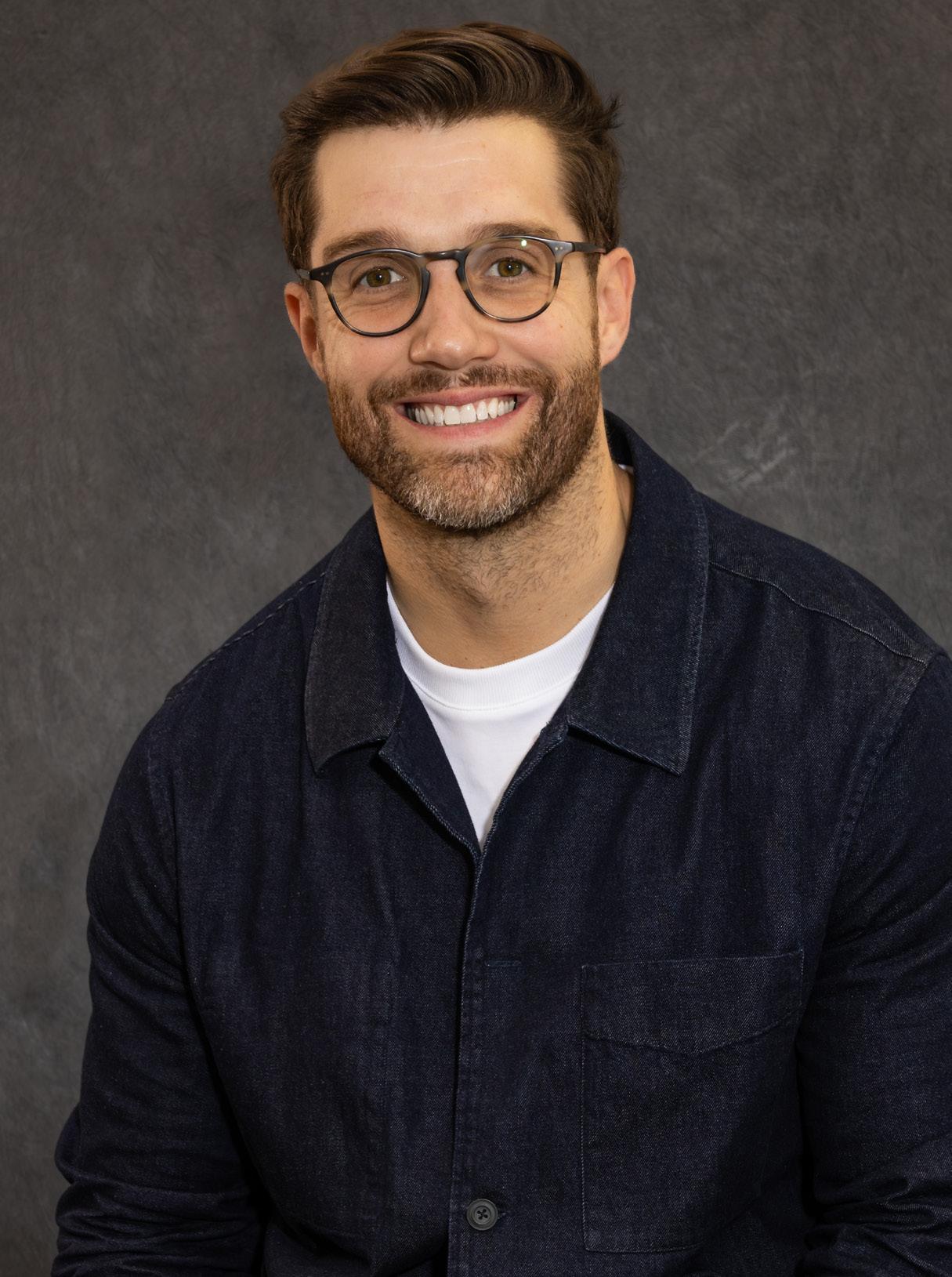
Jack Kelly CEO of Office Ready Tech (ORT)
The role of the workplace has changed and continues to change at a rapid pace.
While debates around WFH Vs RTO mandates dominate headlines, a balanced hybrid approach – allowing workers the freedom to choose how they work – has emerged as the preferred model for many.
Against this backdrop, the concept of the workplace is under constant scrutiny. Flexible and managed workspaces, offering amenity, flexibility and shorter-term agreements are amongst the benefactors - with the flex office market in the UK forecast to grow from a value of $7.3 billion in 2022 to $20.5 billion by 2029.
In this competitive environment where every moment counts, brand is rising in importance and experiences can be shared across multiple social media platforms at a staggering rateapproximately 806,742 posts per second - CX has shifted from being a “nice-to-have” to a key differentiator.
Meeting these expectations isn’t cheap, which is where technology can shine. Not as the star, but as your sidekick. Not as yet more added cost, but as a cost-efficiency play. Technology empowers operators to focus on what truly matters: building relationships, anticipating customer needs, creating memorable experiences, sustainability and understanding space utilisation.
When properly deployed, technology transforms the workplace from functional to exceptional, from passive to pro-active.
The growth of flexible and managed workspaces has been a long one, turbo-charged more recently by major shifts in working patterns and workplace preferences.
When properly deployed, technology transforms the workplace from functional to exceptional, from passive to pro-active
Hybrid working and growing expectations on what an office should be, coupled with the need to control costs whilst attracting and retaining top talent, have driven businesses migrate away from long-term leases and outdated rigid office setups. As a result, demand has surge for spaces that support flexible design, collaboration, wellness and sustainability.
Flexibility in the workplace goes beyond the physical too. End users now expect seamless, personalised experiences that are intuitive and frictionless. For workspace operators, the challenge is to differentiate themselves while delivering these experiences. This is where technology offers those opportunities to shine.
When thoughtfully integrated, technology becomes a silent enabler, operating in the background, eliminating friction and enhancing customer experience. Done right, it creates the ideal conditions for people to excel. High-speed, robust connectivity, digital wallet access control, and building-specific apps are prime examples of tools that streamline operations, reduce admin and directly improve customer satisfaction.
Consider a workspace operator that Office Ready Tech collaborates with. By embracing tech and automation they’ve freed up their team to be more effective. Simplified visitor and meeting room booking, member support, and access control is self-serve and managed via a bespoke app. Their member support helpdesk, integrated into the app, provides real-time customer feedback for the team – and creates a rapid customer-friendly feedback loop for members. Leveraging data collected through the app has allowed them
to make smarter operational and commercial decisions. This tech is clearly delivering ROI for both operator and customer, and most importantly allowing their team to focus on tasks that require a human-touch.
However, it’s crucial here to note that poorly implemented tech can have the opposite effect – leading to frustration, undermining user experience and ironically increasing unnecessary workload on your team.
Ultimately, what distinguishes exceptional workspaces isn’t the technology – it’s the people who operate and use it. However, combine the right tech with a great team, and magic happens. When technology is seamlessly integrated, customer-facing staff are freed to focus proactively on customer-centric services. A community manager, free from unnecessary admin, proactively building relationships and fostering a sense of belonging is a powerful part of any CX strategy – in my experience, this is the stuff that shines through in customer surveys.
A tangible example comes from a flexible workspace operator that leverage insights from their tech stack. Real-time occupancy data has allowed them to optimise cleaning schedules, while app engagement metrics means they curate events that really resonate with members. Office Ready Tech are now working on sensors that integrate together to automatically control the lighting, HVAC and AC equipment in meeting rooms, turning everything off when not in use – leveraging tech to create the most sustainable and customer-focused experience possible, delivering tangible ROI for all.
When thoughtfully integrated, technology becomes a silent enabler, operating in the background, eliminating friction and enhancing customer experience
Technology in the workplace is not just transforming customer experiences; it’s also driving meaningful progress in sustainability, which continues to grow in importance to customers. From energy-focused IoT solutions to real-time data insights, tech provides opportunities to make greener choices. Smart building systems can dynamically adjust lighting, HVAC, and other energy-intensive systems based on occupancy, reducing waste without compromising comfort. Integrated apps and sensors provide insights into space utilisation, enabling space optimisation and allowing operations to be tailored to actual usage. By embracing sustainable tech solutions, workspaces not only reduce their carbon footprint but also align with the growing demand from businesses and employees for environmentally responsible practices –reinforcing a purpose-driven approach that resonates with modern values.
As technology evolves, its potential in the flex and property sector in general is huge. Artificial intelligence has potential to deepen personalisation and revolutionise access to data
insights, whilst I believe we’re only scratching the surface of what the right IoT solutions can offer in terms of optimisation for sustainability and experience. However, innovation must remain balanced with a human-first approach. Whilst tech and design trends will change, the core focus must stay constant: creating spaces that people want to be in.
Delivering exceptional experiences in flexible workplaces - or any office - demands that technology serves as a means to an end, not the end itself. By starting with a clear vision and integrating technology early in the design process, you can ensure it becomes an enabler, not a risk.
With the right strategy and partner, technology empowers people to prioritise what truly matters: creating experiences and connections, and spaces that people want to be in and will return to. When we strike this balance, we create workplaces that not only meet, but will consistently exceed, the evolving expectations of today’s workforce.
In the end, real estate isn’t about having the most advanced technology; it’s about having the right technology, at the right time, that empowers your people and your spaces.
Want to Sell or find Investor for your Business?





